|
I never expected cheese curds to be the thing that restored my faith in humanity, but, alas, they did, at least at the end of this one particular day…. Our trip to Chicago in 2021 did not start off in my favor. For starters, my husband and I were taking our first kid free trip in two years. I had visions of early nights of sitting in front of the TV binge watching Ted Lasso and the Olympics while eating takeout after a long day of sightseeing and activities. I had dreams of sleeping in and wandering around our AirBNB still in our pajamas. I had fantasies of no messes to clean up, nothing to tidy, and being as loud as we wanted. But there was just one problem - Denise. The problem wasn’t with Denise herself. She was a lovely middle aged lady who had interests in artwork and dogs. She belonged to a tennis league and had an active social life where she frequently rode her scooter to said social events. Denise was an orderly person who enjoyed every item in her house to have a home. She was a fine lady. Some may even say an upstanding individual. No, the problem wasn’t with Denise at all. The problem was that Denise was there. On a trip where I was looking forward to spending time with just James, we now had a third. One, me. Two, James. And three, Denise. Denise rented the AirBNB in which we were staying, and surprise, Denise was staying too. Unfortunately unbeknownst to me, I had booked a shared AirBNB stay from Denise, and Denise would be there - sharing a bathroom, kitchen, common area, and almost a bedroom since our bedroom looked right into Denise’s bedroom, and she kept the blinds and window open. 1 point against Humanity. Two days into the trip, I was trying to make the most of our less than favorable accommodations, and, in fact, after a lovely morning stroll along the Chicago River, I became once again optimistic about the days that lay ahead. Later that particular day, we were renting a car to Milwaukee where we would take in the cheese and beers of the city followed by a Brewers game in the evening and topped off with the creme de la creme of the getaway - not only a kid-free night in a hotel, but a Denise-free night in a hotel. “We have plenty of time, but let’s make our way to our rent-a-car, so we can get to the city early enough before the game to explore,” I said to James. Up until this point, we had only taken the Brown Line to and from our destinations. This time we had to take the Blue Line and transfer to the Brown Line. Simple enough. I’ve always said about reality dating shows like - The Bachelor and The Ultimatum - that if you truly want to test a couple’s strength, have them navigate their way around an unknown city. After awhile our dialogue with one another shifted from pleasant to this: “Google is telling me that it’s right here, James. Why can’t you listen to me?” “You’re holding the %$#@ing map upside down, Lauren. Why do I always have to do everything? You can’t do anything right.” “Why do you have to be so mean to me? I’m human, James.” 2 points against Humanity. Needless to say, we never found the Blue Line and eventually had to take a longer, more circuitous route that dropped us off farther from our destination than originally planned. No worries, we could use the exercise in the beautiful, sunny weather we reasoned. Ten seconds later, it started pouring. 3 points against Humanity. We trudged the nearly 7 blocks in the rain to our rental car. We were using Turo, a car rental service like AirBNB. Someone leaves the keys for us and then we take that person’s car for our allotted time and then return it back to their house. “Let’s hope the car doesn’t come with Denise,” I joked. Then the following events proceeded to happen in the downpour in this order:
4 points against Humanity. Finally, we settled into the car out of the rain. We were a little later than we had anticipated, but we were excited to get on the road. James started the car and plugged into the app that we had entered the car. He paused. He paused some more. He had a look of disbelief on his face. He then had a look of ire on his face. “James, what is it? What’s wrong?” “We can’t take the %$#@ing car out of state.” “What?! How did you not know that?” Wrong thing for me to say, considering I was the one who booked an AirBNB with Denise. 5 points against Humanity. We probably sat in the car, completely in denial of our situation, for another 20 minutes. Our only other option was to Uber back to Denise’s, grab our luggage, and take an Uber the 2 hours and 12 minutes to Milwaukee. Having settled on that plan, we executed our plan in that manner. By this point, we had resigned to the fact that we wouldn’t get to explore the city and we would be slightly late to the game. The Uber guy picked us up and upon seeing that we would be going to Milwaukee said that he couldn’t take us. 6 points against Humanity. However, after some under the table dealing, we convinced him to make the trek. Half a point recovered by Humanity. Standing in front of American Family Field, 5 innings late to the game, exhausted, annoyed, and with 5 ½ points stacked against Humanity, I had little hope that anything about the rest of the evening would go well. Nothing would restore my faith in Humanity at this point. Of course, we couldn’t find the entrance to the game. Every entrance we arrived at was closed and a terrible thought crossed my mind: What if we are too late to get into the game? Then, something miraculous happened. The employees working the gate were willing to help us. Having been to 24 MLB stadiums at this point, we were well versed in the apathy of stadium workers and their lack of customer service. But not here. Here at American Family Field where I was wondering if they took the name of their stadium literally. When you’re here, you’re family? A tear trickled down my eye. They were not only willing to help us, they were wanting to help us. They were thrilled to help us. Everyone was. The workers. The guests. The fans. EVERYONE WAS SO NICE! They led us inside. They led us to food. They led us to restrooms. They led us to our seats. They said, “please, thank you, my pleasure.” What was happening? Not wanting to tempt fate, I thought that nothing good could possibly keep happening. But then I sat down in my seat to watch a baseball game and opened my mouth to try cheese curds for the first time. And my faith in humanity was restored with each cheesy, delectable, delicious bite. My goal now is to become a certified sleep and anxiety coach and as part of that I developed a mini STRESS FREE SLEEP email course. I highly suggest checking it out if you struggle with sleep and panic. Buy me a coffee if you liked this blog. And if you're a parent, check out my parenting guide Now What? Mindful Parenting Checklists for Life’s Hard Moments.
0 Comments
My short response to the title of this blog is DON'T GO and conjure in your mind what you imagine the best of Gatlinburg to be and that, my friend, will be the best of Gatlinburg.
My long response to the title of this blog will be this... In a recent trip to the mountains, I learned two things... 1. There are more people in this world who LOVE pancakes than I originally had thought. 2. My disdain for Gatlinburg has surpassed my diresion for St. Louis, Missouri and Kyle's scorn for the entire state of Kansas. But first let's back up and see how we got there. A Decision is Made
After my mom died, my dad decided that we should meet up with Kyle in the fall and travel somewhere, so we could all be together.
We bounced around a few ideas - Chicago, Colorado, Charleston, SC - BUT we settled on some place better. Some place more beautiful. Some place more brilliant. Some place more buttery? Gatlinburg, Tennessee. The logic behind it was that it was some place in the middle for Kyle to easily fly to and for the crew in North Carolina to easily drive to for a long weekend. Perfect. However, my alarm bells should have sounded when my dear cousin said to me, "Have you ever been to Gatlinburg? You're in for a treat." I like treats, so I was excited! Arriving to Gatlinburg
After leaving the quaint and charming town of Blowing Rock, North Carolina, I was looking forward to some more rest and relaxation in the city that claims to be the gateway to the Great Smoky Mountains.
We've already established that I don't like gateways (i.e. The Gateway Arch) but no red flags seemed imminent yet. We packed up the car and headed out on the Blue Ridge Parkway where we took in the sights of the fall foliage and gorgeous mountain vista views, but not before I spilled my stupid Stanley all over the backseat floor, and my feet were now resting in a sopping puddle of water. As I was soaking it all in figuratively and literally, the vibrations of my IPhone startled me out of my dreamlike stance. It was my brother. "Lauren, it's Kyle. Please pray for me." "FOR THE LOVE OF GOD AND ALL THINGS HOLY, WE ARE NOT DOING THIS ANYMORE!!" As a side note, for some strange and unforeseen reason, Kyle booked a separate flight on a separate day from his girlfriend. So Kyle flew into Knoxville, TN a whole day before we even arrived, then Ubered to Gatlinburg the following day, and now was on the side of a street in downtown Gatlinburg at restaurant/bar where we had to pick him up. He'll always remain a mystery to me in the way he thinks and does things.
Upon entering the outskirts of Gatlinburg, it didn't take immensely long for me to see why Kyle needed prayers.
We were in bumper to bumper traffic inching along the parkway to get into the main part of the city. And on the sidewalks were crowds of people...walking? No, walking doesn't seem to be the right word for what they were doing. Shuffling. Yes, these hordes of people were all collectively shuffling about from one end of the strip to the next. And lining the sidewalks were TOURIST TRAPS that were seemingly swallowing the shuffling souls. MINI GOLF RIPLEY'S BELIEVE IT OR NOT WINE TASTING WHISKY TASTING T-SHIRT STORES THE TRUMP STORE (I did have to pause here and giggle as I imagined each president having their own store. THE FILLMORE STORE. THE PIERCE STORE. THE CLEVELAND STORE. THE ARTHUR STORE. hehe) These traps were swallowing these poor souls and spitting them out as a different washed-up specimen. Muwhahaha. I gasped. As a child who grew up in West Virginia, I've seen this horror film before. "Oh my God! Gatlinburg is the Myrtle Beach of the Mountains!" "AHHHHHHHHHHHHHHHHHHHHHHHHHHHHHHHHHHHHHHHHHHHHHHHHHHHHHHHHHHHHHHHHHHHHHH" Cue Halloween theme song.
Having been to Myrtle Beach several times as a child, I'm all too familiar with the drive down there.
First, you hit a point of no return. It's when you realize you have entered the horror movie and there's no turning back . For travelers driving along I-95 on route to MB, that point of no return is South of the Border, the Gateway to Myrtle Beach, and the roadside attraction where you can get two things - sombreros and hepatitis. For Gatlinburg, the point of no return is when you see the Gatlinburg Space Needle, oddly reminiscent of SotB's Sombrero Tower and Arcade. Getting closer, I looked around and realized that there was no escaping. We were being sucked in. We found Kyle on the side of the road, picked him up, and sped off to our AirBNB. The Best of Gatlinburg
To start, the best Gatlinburg could offer us was sending us our keycode at 3:56 PM and allowing us to check in four minutes early for our 4:00 PM check in time!
We decided to spend the rest of the evening not leaving our place of residence in order to gear up to venture out into the wild tomorrow. The next day commenced with Kyle getting lost for three hours because he had to find a gym. He called to ask for directions, but his phone died as I was explaining how to get back. Not confident in Kyle's directional and spatial skills both my dad and I drove around looking for him. My dad finally found him on the side of the road stomping up a hill. At this point, we were ready for some mountain air and gorgeous views located in Great Smoky Mountain National Park. Getting in the car, we started our travel to the park. And that's when we saw THEM.
PANCAKE PANTRY
LOG CABIN PANCAKE HOUSE LITTLE HOUSE OF PANCAKES FLAPJACK'S PANCAKE CABIN ATRIUM PANCAKES Each of these pancake pavilions had people lined up outside and around the corner as they shuffled closer to the puffy perfections, awaiting the simple taste of a buttery bite. It was a sight to behold. Don't get me wrong. I like me some pancakes every now and then, but the scene unfolding before my very eyes was ethereal. One our eyes couldn't make sense of. Never once during my short time on earth have I ever encountered a creature hither or tither that has quite loved pancakes in the way that the breed of humans I saw that day must love pancakes. I was afraid Gatlinburg had drugged these unassuming souls.
I momentarily put the Pancake Panorama out of my head and got ready for some hiking.
The best Gatlinburg has to offer on that front is sitting in more traffic to go three miles in 30 minutes and then another 20 minutes to find parking to hike an overcrowded trail to see a waterfall and then sit in another hour's worth of traffic to get back to the AirBNB. At this point, we were seriously considering our entertainment for the rest of the trip to be having races to see who could make their way from one end of the main drag to the another the fastest while we battled the crowds of people standing aimlessly, shuffling, and standing still. However, the next day we decided to give Gatlinburg one more shot with a trip up to Ober Mountain. To get to Ober Mountain you ride an aerial tram. You can purchase tram only passes for $19.99 or an all access pass for $49.99 (Kids 5 and under are free). We all got the access passes. On our way we once again passed the Pancake People and took a few seconds to marvel at their mysterious ways. The aerial tram was actually pretty cool. Once we got there, we started with the animal exhibit and then I took my son on the carousel and the ice bumper cars while the rest of the gang got food. The line for the ice bumper cars was long and moved slowly but luckily there were benches along the wall to rest our weary legs. A large party "didn't notice" all the people sitting and tried to get to the front of the line, but the people in front politely pointed them to the back of the line. After a half hour and the third round of waiting, it was looking like we would finally be next. The large group behind me had taken to sitting on the benches this time, and they were suspiciously creeping their way to the front. They wouldn't dare cut us, I thought. Well, I'll be damned, those mfers did cut us when our turn finally arrived! Usually a demure and dainty person who balks at the face of too much confrontation, I said to myself, "No." Gatlinburg and life, in general, had beaten me down far too much lately. I wasn't going to stand for this. "NOT T-T-T-TODAY, JUNIOR!" I made a squealing noise, gave those bitches a glaring look, and pushed my way in front of them. "BOO! This ain't no child's play. Who's the real villain now, Gatlinburg? That's right, me. Muwhahaha." I got on that ride, and it was the best freakin' ride of my son's life. Until moments later when my son got to ride the mountain coaster with my husband and everyone else who had been waiting in line while we were at the ice bumper cars (The line was too long for me to wait), and that ride was the best thing everyone did in all of Gatlinburg. You win, Gatlinburg, you win. Oh yeah, my dad and I saw a random bear walking just walking on a side street, and it went into a parking garage. But we were so in awe that we didn't get any pictures. So I guess it doesn't count? My goal now is to become a certified sleep and anxiety coach and as part of that I developed a mini STRESS FREE SLEEP email course. I highly suggest checking it out if you struggle with sleep and panic. Buy me a coffee if you liked this blog. And if you're a parent, check out my parenting guide Now What? Mindful Parenting Checklists for Life’s Hard Moments.
Blowing Rock is 3 1/2 hours away from Raleigh, North Carolina and is the perfect place to get away from the big city and spend a couple days relaxing by the mountains.
We recently got back from a trip there a week ago. Fall is the perfect time to go. The weather is crisp and the leaves are beginning to change. The Logistics:
Keep reading to get our full itinerary and more recommendations Where We Ate
While there are many restaurants we wish we could have tried, we went to two great places for dinner.
1. The Town Tavern This is a sports bar serving American food located on Main Street. We sat outside under the lights on the patio that had a fire pit too. 2. The Speckled Trout This cute restaurant specializes in...no other than trout which was very delicious. We once again sat outside on the ratio. The night we went there was live music. 3. The Blowing Rock Market James and my dad got breakfast here one day. You can sit outside. 4. Blue Deer Cookies A perfect place for an after dinner treat. My dad and James got cookies. Henry got ice cream. I got an ice cream cookie sandwich. Here are my other recommendations that we will definitely be trying the next time we go.
Things We Did
1. Hiking
We did the Glen Burney Trail to Glen Burney Falls and Glen Marie Falls. The parking lot is located right off main street. The hike is roughly 3 miles and does have some uneven, strenuous terrain. The way out is all downhill and the way back is uphill. But my 4-year old son did it with some bribery and motivation toward the end. I definitely recommend this hike. 2. Grandfather Mountain You have to purchase tickets ahead of time to get into the park. We started off our trip here at Mildred's Grill. While James waited in line for the food, Henry and I walked around to look at the exhibits of animals. We could see bears, elk, cougars, eagles, and otters. After eating, we headed up the mountain to the do the suspension bridge, the highest in the United States. You have to wait in your car to get into the parking lot as they let people out of the parking lot or you can park in the lower parking lot and hike up .5 miles to the bridge. The bridge was scary to me. I wouldn't say I enjoyed it, but the views are nice. I recommend staying longer here and doing more hiking throughout the park. 3. Grandfather Vineyard and Winery We went here after Grandfather Mountain and had a great time here. This vineyard is the cutest I've ever been too. It has ample seating and even has spots along the creek. Gorgeous views. The day we went there was live music and we ordered two flights of wine. Perfect for kids too. 4. Window Shopping I highly suggest spending some time browsing the shops along Main Street and beyond in downtown Blowing Rock. While you shop, your partner can take the kids to the playground. There are so many unique boutiques and shops that are fun to go in and out. 5. Drive the Blue Ridge Parkway Drive this stretch of road through the mountains to see beautiful views. Other Recommendations
Other Places to Visit in North Carolina
My goal now is to become a certified sleep and anxiety coach and as part of that I developed a mini STRESS FREE SLEEP email course.
I highly suggest checking it out if you struggle with sleep and panic. Buy me a coffee if you liked this blog. And if you're a parent, check out my parenting guide Now What? Mindful Parenting Checklists for Life’s Hard Moments.
My brother Kyle and I have always shared similar interests. There's only one difference. He tends to take these said interests and go a little, how should I say it, obsessive. I first had a love for sports and geography. But then Kyle took to wrestling at the spry age of 6 and my delts and lats were no match for his when my dad made us tussle (true story). And soon after, woe is me, my knowledge of delts and lats* were no match to his photographic knowledge of the atlas when my mom made us scrimmage on roadtrips (true story). I had a respectable 9/11 period where I read tons of books, watched a lot of documentaries, and did a Social Studies Fair Project judged by Mr. Baum where I earned superior and placed in the top 3, but I was ̶t̶w̶o̶ ̶t̶o̶w̶e̶r̶e̶d̶ too coward to ever make mine a public bit. "̶M̶o̶h̶a̶m̶e̶d̶ atta boy, Kyle, way to be brave and hijack this knowledge from me."** I had a memorize oddly specific facts phase when I spent a summer memorizing my Latin vocabulary, so I could impress my 8th grade class when our priest/teacher quizzed us at the beginning of the school year and he was so in awe that he exempted me from the test and then I said "Veni, Vidi, Vici" and the whole class laughed (True story except when everyone laughed). Kyle took it a little further by spending a day memorizing bachelorette and bachelor occupations to win a trivia competition for thousands of viewers which makes my Latin triumphum in front of 21 parochial school students pale in comparison. I guess I'm just missing some piece of the puzzle that Kyle has. HOWEVER.... There is one thing that Kyle is trying to outdo, Exploit. And everyone just thinks it is soooo funny. But it really grinds my gears. Sticks in my craw. It really ruffles my feathers. Boils my blood. Gets under my skin. I will not allow him to upscond this from me. *How Geography Bee Phenoms say deltas and latitudes **I didn't feel good about making 9/11 jokes. I'm sorry. Protocols and RegimensI have long been a lover of protocols and regimens. It's kind of been my thing (flips hair). I unironically wrote a 30 Day Challenge that is a protocol on steroids and not meant to be humorous at all (and actually would probably be pretty cringe to go back and read now). Don't buy it. Seriously, this isn't a sales tactic (or is it??). No, seriously, don't buy it. I have a lot better advice now. But since developing that challenge, I have had a lot more life experiences under my belt. To be fair, Kyle has too. Our mom died... And not that us Bauers would ever be so crass as to turn our mother's death into a competition of Who is Coping Better... But... If we did, I'd let you be the judge of who is winning. Let's just say one of us is melting down over chicken sliders, chugging champagne, distracting himself (or herself) with studying oddly specific NFL facts, telling his (her) sibling that he has trained himself (herself) to look at treats such as donuts and cookies with disgust, and going through protocols like Francis goes through the thesaurus (hey-ohhh)*** While the other is attending bereavement support groups with 80 year old ladies, journaling in a grief therapy workbook, reading in hammocks as she (or he) soaks in the parcels of sun on her (or his) face and stares up at the endless sky, contemplating life, and strolling through gardens to literally stop and smell the flowers while giving thanks for the many blessings she (or he) still has. So... I'll let you be the judge of whose daily procedure you would like to follow. Side note: I don't know how sensitive you all are yet. I'm still gauging, but I'm starting to think you are not nearly delicate as the comment section of a parenting post about Cocomelon. But, in case you are, this is a joke. We are not making my mom's death a competition. Kyle and I are very much connected and united throughout all of this. Read here on how everyone grieves differently. ***Just kidding I really like Francis, and I go through the thesaurus too. Kyle's Perfect ProtocolTo recap here is Kyle's Perfection Protocol: Gen 1. I believe he's on Gen 6-7 now. Just sayin'
|
| Lauren Barrett is a multi-passionate mom working to help all parents become their best selves and build positive relationships with their kids through mindful parenting. She has a degree in deaf education and a Master’s in Reading Education. She is a high school teacher of the Deaf and hard-of-hearing by day, a cross country coach by the afternoon, a writer/author by her son's nap times, and a full time mom to an amazing 4-year old. Lauren is a 3x author of the Add One-A-Day 30 Day Challenge, children's book, Henry's Hiccups, and parenting guide Now What? Mindful Checklists for Life's Hard Parenting Moments, a blogger at Lauren Barrett Writes, and has been published on sites like A Fine Parent, Pregnant Chicken, Pop Sugar, Her View From Home, and Scary Mommy. She loves her faith, running, visiting MLB stadiums with her husband, chocolate, scrapbooking, pretending she would actually do well on the Amazing Race, re-watching The Office, listening to Bobby Bones, and helping out all moms. She lives in North Carolina with her husband, James, and son, Henry. Follow her on Instagram at @laurenbarrettwrites, and get her free guide on what to do during the middle of a tantrum. |
An alternate title to this blog is My (Brief) Thoughts on Thoughts and Prayers.
For once this blog will be fairly short, but I was thinking back on my mom's death and related it to a book I just finished reading, "Why Bad Things Happen to Good People."
It got me thinking on the way we talk about thoughts and prayers, and I wanted to caution people to shift how they talk about prayers, especially around people suffering and grieving and especially around little kids.
For once this blog will be fairly short, but I was thinking back on my mom's death and related it to a book I just finished reading, "Why Bad Things Happen to Good People."
It got me thinking on the way we talk about thoughts and prayers, and I wanted to caution people to shift how they talk about prayers, especially around people suffering and grieving and especially around little kids.
A Story On How the Way We Can Speak About Prayers Can Cause Anger and Guilt to Some
As soon as I got the call from my dad that my mom had a brain bleed and was in a coma, I texted my friends and family and asked for prayers.
Those prayers and knowing that everyone was collectively thinking of our family helped get me through the next 24 hours, the worst of my life.
Those prayers helped me get through the death of my mom, the funeral, and all the days afterward as I still intensely grieve.
It wasn't until I went home to WV to the funeral that I really starting thinking about prayers and the way we speak about them when someone is suffering or gets sick.
While home I overheard a conversation at the funeral of someone speaking how all the prayers for a family member of hers were working to help make the person who is sick better. Wonderful news!
But if I hadn't long ago shifted my thoughts on prayers, I might have had more bitter and angry thoughts as I stood next to my mom's body.
"Well, why didn't all the prayers for my mom heal her?"
"I must not have prayed hard enough."
"I must not have gotten enough people to pray for her."
"I guess God doesn't like me or my mom enough."
Now imagine in this scenario that I was a little girl standing next to her deceased mom who was sick. Or maybe I was instead a little boy whose little brother is dying from cancer.
If this child hears that someone else's prayers to God cured this stranger's loved one but not her/his own loved one, and no adult is there to explain this conversation to him/her, their relationship with God might be forever changed.
They might have intense guilt. "I was tired that one night before bed and forgot to pray. Maybe that's why my mom died. This is all my fault."
They might have anger. "God doesn't love my family enough. Why should I love Him back?"
They might have fear. "God must be punishing me and our family because He doesn't like us as much as He likes this other family. What else will He do to us?"
I can imagine moving forward this child might have a very complicated, shaky relationship with God if things don't get cleared up quickly.
And in this scenario we could substitute the child for anyone who might already be questioning God.
A Shift in the Way We Think About Prayer
I have long stopped crediting prayers for a specific outcome beyond our control.
A prayer to God asking for the results of a cancer biopsy won't change the results because the results are already known. The same with prayers stopping natural disasters.
Imagine two families praying for a tornado to not destroy their neighborhood. One child's home and neighborhood are spared. The other child's house is demolished and friends and family members are killed.
The one family whose home remains intact praises God for answering their prayers and saving their family. The child goes to school and says how it's because of their prayers to God that kept them safe. The other child whose home was destroyed and whose loved ones lost their lives overhears this. How does this make her feel?
I don't believe that God chooses to cure and spare some people while allowing other people, including and especially kids, to suffer and die.
I don't believe He works that way.
I think He is always on the side of the sufferer.
No, instead when I asked for prayers I took great comfort in knowing that I wasn't alone through all this.
I think that's the power of prayer. That we are not alone.
We pray for strength to help us with all the hard times.
We pray that God doesn't harden our hearts to the world.
We pray for patience as we deal with our suffering.
We pray for gratitude to help us remember all the blessings we still have.
We pray for the courage to continue to face the world amongst all our suffering.
We pray for comfort for when the pain gets unbearable.
We pray for hope that one day our suffering will end and that we will see the person we love again in Heaven.
That's the shift in praying that I think we all need.
When I was pregnant I wrote this article for a magazine, and I think this excerpt taken from it is more poignant and relevant than ever....
I was at an all time low in the pregnancy. The morning sickness had reached its peak. My stomach hurt. My head ached. I was beyond tired. I had thrown up multiple times. I was feeling what I imagine to be heartburn or something brewing in my lower chest. My appetite was pretty nonexistent. Week 10 was definitely the worst. I was feeling sorry for myself and having thoughts like If I can't even deal with being sick, how am I going to be a mom? There is so much worse happening in the world, and I am complaining about this. I feel so weak. How do other women do this? I can barely cope, and I don't even have to work. What's wrong with me? While those thoughts were milling around in the back of my head, something happened that began to change my perspective.
I have always been a big believer in the positive power of prayer. No, I do not think praying will stop bad things from happening. Bad things will still always happen. I do, though, believe prayer will change the way we view, perceive, and look at bad things. The more we pray, the more we can gain positive control of a situation rather than slipping into despair.
So there I was at the airport throwing the ultimate pity party for myself and silently weeping over how I could possibly endure any more weeks of feeling this way. The negative thinking was spinning out of control. That was until I sat down on a random seat in the airport and felt something underneath me. I pulled the object out from under me, and it was a rosary. I teared up, stuck the rosary in my purse, and began to pray and pray and pray until slowly my mind started shifting.
I would love to say that the sickness miraculously disappeared, but it didn't. In fact, it got slightly worse, for when I arrived home after the flight, I puked violently three times.
But instead I received something better - the clarity that suffering is a part of life, and there is something meaningful at the end of it...
The same thing happened the other week. I was again having the ultimate pity party for myself and weeping from the pain of missing my mom so much.
I remembered what they said in my grief support group. Pray. Not pray to take away the pain and suffering but pray for a little bit of comfort in your time of sorrow.
In my haste to leave the house, I grabbed an old purse from the shelf. In it I found three things that instantly brought me comfort and a slight smile to my face.
My mom loved praying the rosary, so I took the manual and the rosary and drove to church to pray.
The prayers will never take away the pain I have from missing my mom, but they give me comfort when I get tired from mourning. They give me strength when I feel weak. They give me calls and texts from family and friends when I feel alone. They give me the clarity to see the beauty of a butterfly floating by or a flower blooming when everything seems dark.
They give me hope.
I'd love to hear your thoughts on prayers...
A prayer to God asking for the results of a cancer biopsy won't change the results because the results are already known. The same with prayers stopping natural disasters.
Imagine two families praying for a tornado to not destroy their neighborhood. One child's home and neighborhood are spared. The other child's house is demolished and friends and family members are killed.
The one family whose home remains intact praises God for answering their prayers and saving their family. The child goes to school and says how it's because of their prayers to God that kept them safe. The other child whose home was destroyed and whose loved ones lost their lives overhears this. How does this make her feel?
I don't believe that God chooses to cure and spare some people while allowing other people, including and especially kids, to suffer and die.
I don't believe He works that way.
I think He is always on the side of the sufferer.
No, instead when I asked for prayers I took great comfort in knowing that I wasn't alone through all this.
I think that's the power of prayer. That we are not alone.
We pray for strength to help us with all the hard times.
We pray that God doesn't harden our hearts to the world.
We pray for patience as we deal with our suffering.
We pray for gratitude to help us remember all the blessings we still have.
We pray for the courage to continue to face the world amongst all our suffering.
We pray for comfort for when the pain gets unbearable.
We pray for hope that one day our suffering will end and that we will see the person we love again in Heaven.
That's the shift in praying that I think we all need.
When I was pregnant I wrote this article for a magazine, and I think this excerpt taken from it is more poignant and relevant than ever....
I was at an all time low in the pregnancy. The morning sickness had reached its peak. My stomach hurt. My head ached. I was beyond tired. I had thrown up multiple times. I was feeling what I imagine to be heartburn or something brewing in my lower chest. My appetite was pretty nonexistent. Week 10 was definitely the worst. I was feeling sorry for myself and having thoughts like If I can't even deal with being sick, how am I going to be a mom? There is so much worse happening in the world, and I am complaining about this. I feel so weak. How do other women do this? I can barely cope, and I don't even have to work. What's wrong with me? While those thoughts were milling around in the back of my head, something happened that began to change my perspective.
I have always been a big believer in the positive power of prayer. No, I do not think praying will stop bad things from happening. Bad things will still always happen. I do, though, believe prayer will change the way we view, perceive, and look at bad things. The more we pray, the more we can gain positive control of a situation rather than slipping into despair.
So there I was at the airport throwing the ultimate pity party for myself and silently weeping over how I could possibly endure any more weeks of feeling this way. The negative thinking was spinning out of control. That was until I sat down on a random seat in the airport and felt something underneath me. I pulled the object out from under me, and it was a rosary. I teared up, stuck the rosary in my purse, and began to pray and pray and pray until slowly my mind started shifting.
I would love to say that the sickness miraculously disappeared, but it didn't. In fact, it got slightly worse, for when I arrived home after the flight, I puked violently three times.
But instead I received something better - the clarity that suffering is a part of life, and there is something meaningful at the end of it...
The same thing happened the other week. I was again having the ultimate pity party for myself and weeping from the pain of missing my mom so much.
I remembered what they said in my grief support group. Pray. Not pray to take away the pain and suffering but pray for a little bit of comfort in your time of sorrow.
In my haste to leave the house, I grabbed an old purse from the shelf. In it I found three things that instantly brought me comfort and a slight smile to my face.
- A ticket stub from when my mom and I went to her 55+ community's dessert and theater production in their clubhouse where we spent the whole time stifling laughter at how bad the acting was (They tried).
- A pocket-sized manual on how to pray the rosary.
- The exact rosary that I found at the airport that day I was pregnant.
My mom loved praying the rosary, so I took the manual and the rosary and drove to church to pray.
The prayers will never take away the pain I have from missing my mom, but they give me comfort when I get tired from mourning. They give me strength when I feel weak. They give me calls and texts from family and friends when I feel alone. They give me the clarity to see the beauty of a butterfly floating by or a flower blooming when everything seems dark.
They give me hope.
I'd love to hear your thoughts on prayers...
| Lauren Barrett is a multi-passionate mom working to help all parents become their best selves and build positive relationships with their kids through mindful parenting. She has a degree in deaf education and a Master’s in Reading Education. She is a high school teacher of the Deaf and hard-of-hearing by day, a cross country coach by the afternoon, a writer/author by her son's nap times, and a full time mom to an amazing 4-year old. Lauren is a 3x author of the Add One-A-Day 30 Day Challenge, children's book, Henry's Hiccups, and parenting guide Now What? Mindful Checklists for Life's Hard Parenting Moments, a blogger at Lauren Barrett Writes, and has been published on sites like A Fine Parent, Pregnant Chicken, Pop Sugar, Her View From Home, and Scary Mommy. She loves her faith, running, visiting MLB stadiums with her husband, chocolate, scrapbooking, pretending she would actually do well on the Amazing Race, re-watching The Office, listening to Bobby Bones, and helping out all moms. She lives in North Carolina with her husband, James, and son, Henry. Follow her on Instagram at @laurenbarrettwrites, and get her free guide on what to do during the middle of a tantrum. |
*But Are Not More Attractive Than My Husband and Don't Stir My Loins: A Blog Dedicated to My Mom
This might be my stupidest blog to date, but I'm certainly not above it.
For each blog that I punctiliously pen doesn't always need to be a rung on my stepladder of avarice to earn me merits and accolades from a species of humans who are enamoured with rickets and blue raspberries and armored with knowledge of Violet Beauregarde and Bethany Hamilton (someone literally needs to "arm her").
My prophetic prose need not be suffused with synonymic language that I perused in the thesaurus in order to showcase that I attended the prestigious university of Indiana University of Pennsylvania (IUP).
No, sometimes the blogs that I carefully craft are devoid of worth and are a two-demenstial street view, at best.
Sometime I like to write shallow blogs that objectify men by inserting really bad puns about them and saying stuff that I would never do in real life.
Sometimes, I like to write blogs that are quirky and goofy and a little bit silly. Like me. Tehe. Sue me. 💁🏽♀️
This blog is dedicated to my mom who loved shows like The Bachelor/Bachelorette and Love is Blind and who used to love telling me the celebrities that she found "so cute [Simon Peter, the apostle and Will Compton]" but "it's not like they stirred her loins because I'm old and I think that would be a sin, Lauren." 🤢
If I had to hear her say that, so do you.
Without further ado, here are the hunks. *I'm 34-years old for reference.*
For each blog that I punctiliously pen doesn't always need to be a rung on my stepladder of avarice to earn me merits and accolades from a species of humans who are enamoured with rickets and blue raspberries and armored with knowledge of Violet Beauregarde and Bethany Hamilton (someone literally needs to "arm her").
My prophetic prose need not be suffused with synonymic language that I perused in the thesaurus in order to showcase that I attended the prestigious university of Indiana University of Pennsylvania (IUP).
No, sometimes the blogs that I carefully craft are devoid of worth and are a two-demenstial street view, at best.
Sometime I like to write shallow blogs that objectify men by inserting really bad puns about them and saying stuff that I would never do in real life.
Sometimes, I like to write blogs that are quirky and goofy and a little bit silly. Like me. Tehe. Sue me. 💁🏽♀️
This blog is dedicated to my mom who loved shows like The Bachelor/Bachelorette and Love is Blind and who used to love telling me the celebrities that she found "so cute [Simon Peter, the apostle and Will Compton]" but "it's not like they stirred her loins because I'm old and I think that would be a sin, Lauren." 🤢
If I had to hear her say that, so do you.
Without further ado, here are the hunks. *I'm 34-years old for reference.*
We here at Teen's Go Rogue (just like I went rogue with this blog), love a good list.
So break out your pumpkin because things are about to get spicey. Oww Oww.
So break out your pumpkin because things are about to get spicey. Oww Oww.
#10 Travis Kelce, 33 years old
I know, I know. I'm jumping on the bandwagon here.
Three points to clarify...
And...
I like him! Sure, he can be corny, cringey, and even lame, but I can be all of that too.
I'd butt fumble into his tight end all day (Does that even make sense?)
Three points to clarify...
- I knew who Travis Kelce was before Taylor Swift.
- I am not a Swiftie, but I'm not not a fan. When her music comes on, I'm pleasantly surprised at how many songs I know and love.
- Taylor Swift did cause me to look more into this man.
And...
I like him! Sure, he can be corny, cringey, and even lame, but I can be all of that too.
I'd butt fumble into his tight end all day (Does that even make sense?)
#9 Rupert Grint or Ed Sheeran, 35 and 32 years old
Gingers and British. Yes, please.
One could give me insights into Hogwarts and the other could sing to me "Thinking Out Loud."
I'll take either.
One could give me insights into Hogwarts and the other could sing to me "Thinking Out Loud."
I'll take either.
#8 Andrew, the Apostle, 2,013 years old
Yes, Noah James (34) is technically the one who plays Andrew, the Apostle on The Chosen.
But I don't find Noah James attractive, I find Andrew attractive.
How hot would it be to have someone perform miracles for you and heal you?
Headache - healed
Sprained ankle - healed
Plus, Andrew could use a little love. Jesus was always picking Peter, James, and John to do stuff.
Why not Andrew? Peter is his brother.
Andrew is probably the brooding guy with a chip on his shoulder that probably wants to prove how special he is.
But I don't find Noah James attractive, I find Andrew attractive.
How hot would it be to have someone perform miracles for you and heal you?
Headache - healed
Sprained ankle - healed
Plus, Andrew could use a little love. Jesus was always picking Peter, James, and John to do stuff.
Why not Andrew? Peter is his brother.
Andrew is probably the brooding guy with a chip on his shoulder that probably wants to prove how special he is.
#7 Kris Bryant, 31 years old
I love baseball, so I probably could have picked baseball players to make up 90% of my list (Sorry Corey Seager, just like the Rangers, you came close but couldn't quite win it all) , but if I have to choose one it would be this guy. He's a homerun in my books.
#6 Ryan Lochte, 39 years old, not speaking
This hunky bod studmuffin of a man is on my list. Just, watch out, the minute he opens his mouth to speak whatever nonsense he usually sputters, he's off it.
No problem. I'll just teach him a few basic signs and then stare at him. We will get along swimmingly.
No problem. I'll just teach him a few basic signs and then stare at him. We will get along swimmingly.
#5 Jeremiah Fisher, definitely over 18 years old
Yes, I like The Summer I Turned Pretty. Yes, I'm Team Jelly. Yes, the character Jeremiah Fischer is on my list. Yes, I am a 34 year old woman. No, the actor who plays Jeremiah, Gavin Casalegno (24-years old) is not on my list. There's a difference.
The actor takes way too many artsy, model-like photos that are a turn off.
The character, Jeremiah Fischer (2nd season...1st season he looks like a child), is perfection.
The actor takes way too many artsy, model-like photos that are a turn off.
The character, Jeremiah Fischer (2nd season...1st season he looks like a child), is perfection.
#4 Donald Glover, 40 years old
One of my favorite shows, Community, has one of my favorite characters ever, Troy Barnes who plays another favorite character, Abed Nadir.
"Troy and Abed in the morning."
Much to my delight my husband informed me that Troy is played by Donald Glover who also is the Childish Gambino. The versatility and the good looks on this man are impressive.
"Troy and Abed in the morning."
Much to my delight my husband informed me that Troy is played by Donald Glover who also is the Childish Gambino. The versatility and the good looks on this man are impressive.
#3 Liam Hemsworth, 33 years old
I'm still trying to figure how in The Hunger Games Katniss Everdeen chose Peeta over Gail who is played by the gorgeous Australian hunk, Liam Hemsworth. I was rooting for Miley and him, but in the end, she didn't pick him either.
Well, I do, Liam. I do.
Well, I do, Liam. I do.
#2 Joey Roppo, 29 years old
So....technically this guy isn't really famous, but he did star alongside his sister in Netflix's hit reality TV show, Dated and Related, that I'm sure everyone has watched.
Actually, the show is terrible and not in a "so bad it's good" way (Like Love on a Leash that I've been begging Kyle to watch for years now). Each person on it was extremely bland, but I looked each one up on Instagram to learn more about them and to see if they had some depth.
Only two people did. Corrina Roppo and her brother Joey Roppo. Joey is an all-American guy. He's an unproblematic basketball player/singer/dancer who loves the Lord and his family and knows how to stay humble and kind.
If Kyle and I were single, I would have signed us up in two winks of a coal miner's eye, and I would have snagged Joey and Kyle, Corrina.
Actually, the show is terrible and not in a "so bad it's good" way (Like Love on a Leash that I've been begging Kyle to watch for years now). Each person on it was extremely bland, but I looked each one up on Instagram to learn more about them and to see if they had some depth.
Only two people did. Corrina Roppo and her brother Joey Roppo. Joey is an all-American guy. He's an unproblematic basketball player/singer/dancer who loves the Lord and his family and knows how to stay humble and kind.
If Kyle and I were single, I would have signed us up in two winks of a coal miner's eye, and I would have snagged Joey and Kyle, Corrina.
#1 Taylor Zakhar Perez, 31 years old
This guy is what started this whole list.
As I was re-watching the Kissing Booth franchise series with my cousins as one does to marvel at the cinematic masterpiece that it is, I proclaimed that Taylor Zakhar Perez is the most attractive man on this universe* and that no one, and I mean no one, could find me someone more attractive and that *SPOILER ALERT* Elle (Joey King) had the audacity to choose Noah Flynn (too-tall Jacob Elordi) over the Adonis and Greek god that is Marco (Taylor Zakhar Perez) is lightyears beyond my comprehension.
Congratulations, Taylor!
*But not more attractive than my husband
As I was re-watching the Kissing Booth franchise series with my cousins as one does to marvel at the cinematic masterpiece that it is, I proclaimed that Taylor Zakhar Perez is the most attractive man on this universe* and that no one, and I mean no one, could find me someone more attractive and that *SPOILER ALERT* Elle (Joey King) had the audacity to choose Noah Flynn (too-tall Jacob Elordi) over the Adonis and Greek god that is Marco (Taylor Zakhar Perez) is lightyears beyond my comprehension.
Congratulations, Taylor!
*But not more attractive than my husband
Honorable Mentions
#11 Jonathan Daviss, 23: As one of the stars of Outer Banks, Daviss might be a little young for me, but he can find my treasure any day. 😶
#12 Simu Liu, 34: Beloved for his role on Kim's Convenience and convenient to look at too. Winky face.
#13 Luke Grimes, 39: Don't watch Yellowstone, but I did watch the Beginners Guide to Happiness, and I'll have a wild time with him anytime.
#14 Shaun White, 37, short hair: The 3-time Olympic gold medalist in snowboarding melts my heart.
#15 Steph Curry, 35: I swish you were mine.
#16 Andrew Garfield, 40: Such a sweet guy. We could bond over the loss of our moms in our 30s.
#17: Patrick Mahomes, 28: Sorry, Patty, just like Brittany is to Taylor. You are to Travis. I might actually replace Mahomes with Seager.
#18 Matthew, the Apostle, 2013 (Paras Patal, 37): You can tell me the genealogy of Jesus all day, baby
#19: Thomas Rhett, 33: I could die a happy woman with you.
#20 Derek Theler, 36: The hit star of the hit show, Bab Daddy can be my Baby Daddy anytime.
#12 Simu Liu, 34: Beloved for his role on Kim's Convenience and convenient to look at too. Winky face.
#13 Luke Grimes, 39: Don't watch Yellowstone, but I did watch the Beginners Guide to Happiness, and I'll have a wild time with him anytime.
#14 Shaun White, 37, short hair: The 3-time Olympic gold medalist in snowboarding melts my heart.
#15 Steph Curry, 35: I swish you were mine.
#16 Andrew Garfield, 40: Such a sweet guy. We could bond over the loss of our moms in our 30s.
#17: Patrick Mahomes, 28: Sorry, Patty, just like Brittany is to Taylor. You are to Travis. I might actually replace Mahomes with Seager.
#18 Matthew, the Apostle, 2013 (Paras Patal, 37): You can tell me the genealogy of Jesus all day, baby
#19: Thomas Rhett, 33: I could die a happy woman with you.
#20 Derek Theler, 36: The hit star of the hit show, Bab Daddy can be my Baby Daddy anytime.
That's our list, folks. Continue to reading to learn what influencers pack in their bags because I'm sure you would have no idea to pack your own bag without this tutorial.
Buy me a coffee if you liked this blog.
And if you're a parent, check out my parenting guide Now What? Mindful Parenting Checklists for Life’s Hard Moments.
And if you're a parent, check out my parenting guide Now What? Mindful Parenting Checklists for Life’s Hard Moments.
| Lauren Barrett is a multi-passionate mom working to help all parents become their best selves and build positive relationships with their kids through mindful parenting. She has a degree in deaf education and a Master’s in Reading Education. She is a high school teacher of the Deaf and hard-of-hearing by day, a cross country coach by the afternoon, a writer/author by her son's nap times, and a full time mom to an amazing 4-year old. Lauren is a 3x author of the Add One-A-Day 30 Day Challenge, children's book, Henry's Hiccups, and parenting guide Now What? Mindful Checklists for Life's Hard Parenting Moments, a blogger at Lauren Barrett Writes, and has been published on sites like A Fine Parent, Pregnant Chicken, Pop Sugar, Her View From Home, and Scary Mommy. She loves her faith, running, visiting MLB stadiums with her husband, chocolate, scrapbooking, pretending she would actually do well on the Amazing Race, re-watching The Office, listening to Bobby Bones, and helping out all moms. She lives in North Carolina with her husband, James, and son, Henry. Follow her on Instagram at @laurenbarrettwrites, and get her free guide on what to do during the middle of a tantrum. |
"Honestly, I can't tell you why writing helps. When Matt died, I quit almost everything - except writing. I wasn't writing to heal. I wasn't writing to communicate to others. I wasn't writing to find peace or resolution or acceptance. I was writing because I had to. Because words leaked out of me, whether I had paper in front of me or not. " -Megan Devine
I never wanted to be an unofficial "expert" on grief (aka experience it firsthand), but here I am.
When I experience something or someone close to us experiences something, I dive in and read and read and read. My mom was the same way. We comb through the helpful advice and discard the unhelpful advice.
When I got pregnant, I read pretty much every parenting blog and book out there. I did the same when I was diagnosed with an autoimmune disease and then started to experience insomnia. When I learned that being non-racist wasn't good enough, and I had to be an antiracist, I read.
Now, I'm grieving, and I'm doing the same. Reading books. Going to grief support group. Joining Facebook Groups. Poring through Instagram posts on grief. I want to know if what I'm feeling and thinking is crazy. I want to find that I'm not alone. I want some hope that things aren't always going to feel this bad.
Here's the thing. There are a lot of people out there who are silently grieving a loss of someone.
So, I decided to put together a list of what grief can feel like after someone dies. These are common thoughts that, not only I'm thinking and feeling, but I've read and heard that other people have experienced too.
These thoughts are mostly for out-of-order deaths. Deaths when a parent dies too young and when their children are still too young. Deaths when siblings die too young. Deaths when a spouse dies too young. Deaths when a close friend dies too young. Deaths when a child dies before a parent much too young. Deaths when the person who died should have had 20, 30, 40, 50 + more years.
I'm recording all this now while it is still very fresh and early. It'll be interesting to look back on this years from now and see how I've changed.
It might sound like I'm rambling when I record these thoughts and feelings down below. But that is what grief is. It isn't neat and orderly. It's messy and chaotic and sporadic and incoherent and illogical most of the time.
I hope you find a tiny bit of solace that you aren't alone. And if you aren't grieving, I hope it helps you understand what your loved one is going through.
Grief, at least in the very early stages, is all consuming. You think about little else. You have no idea what is going on in the news (except that Taylor Swift watched Travis Kelce play). You have really no idea what is going on in other people's lives. It feels selfish. But it isn't that you don't care. It's that your brain isn't capable right now of taking on much of anything else. Your brain is protecting you.
Grief feels like a hole in your chest and stomach. It throbs. It lingers. It feels empty. It longs for the past and the way things were.
Grief looks differently for everyone. It has no timeline. It has no stages. Year 2 might be harder than Year 1.
Your life is now very distinctly divided into two parts: BEFORE and AFTER. Sometimes you spend hours trying to live in the before.
I usually look for the lesson during hard times, but my mom didn't need to die for me to be taught a lesson. I already appreciate life. I already didn't take her for granted. I already immensely enjoyed our time together. What was the lesson? Sometimes there is no lesson. Sometimes we just aren't meant to know the answers. It's God's Plan, and we will know once we die and it will all make sense.
I'm really happy for my mom. I know she is in Heaven. But I'm so, so sad for me. I miss her. So much.
Your mission becomes getting to Heaven and everyone you know to Heaven. Hopefully, though, not for a long, long time.
People say that my mom wouldn't want be to me unhappy. I say back to that, "Well, I didn't want my mom to die, so we can't get everything we want now can we, Mom." 😉
I'm not just mourning the loss of my mom. I'm grieving the loss of our family dynamics. Our future. Our dreams. My mom and dad's relationship. My mom's relationship with my brother. My mom's relationship with my son. The other kids who I thought I would have had by now and whom my mom will never meet. And I'm grieving so much more.
I'm also grieving the loss of me. I realize that I'll never be the same person I once was.
You also mourn the death that you thought you would have had with her. In my mind, I pictured it 20+ years down the road. She is lying in bed with the sun streaming in. We play her favorite music. We all hold her hands and share happy memories. It's sad, but we relish in the fact that she had a long, happy life with us. In reality, I got none of that. It was quick. It was traumatic. There were no sounds except for the haunting noises of the hospital. I couldn't breathe. And I couldn't even look at her while she died because I thought I would have a panic attack and couldn't accept the fact that this was really happening. Like maybe if I shut my eyes real tight that this would all just be a nightmare.
You replay the events leading up to the death over and over. The call. The wait. The drive. The first look. The crying. The anger. The looks on everyone's faces as they one-by-one come into the hospital room. The decisions. The watching her die. The slow walk back to the car when you look out and realize the world didn't stop after the worst thing that's ever happened to you happened.
You go over all the things, and I mean all the things, you did during the last month together and try to make sense how someone so alive is now dead. Trip to waterfall. Picnic. Lake. Hiking. Swimming. Family dinners. Mini Golf. Science Museum. Sleepovers. Eye Spy in the Car. Sitting on her bed laughing. Mall. Dinner. Concert. Beach. Laughing in Church at My Dad's Getting Sunscreen in His Eyes. More dinner. Ice Cream. Ferry ride. Phone Calls. FaceTime. Trivia. Hug. Dead.
You try to assign a reason to why she died. For me, I thought maybe she was going to get diagnosed with dementia shortly after and she wouldn't want us to see that in her. But this is fruitless. It's unfair. We still should have had so many good times left.
You scroll through pictures, videos, texts, cards, journals constantly. Realizing that this is all you have. All you have left of their voice. All you have left of their words. All you have left are the memories and love.
You don't want to get rid of anything. Her laundry because it still smells like her. The clothes she wore to the hospital that day. The food she had to eat. Her phone number pinned to the top of your phone. Everything that is hers. You want to keep it all.
You want to be kinder and more compassionate to anyone who has ever gone through this or something similar.
You want to talk about the person you loved who died every second of every day. The memories. The death. All of it.
You allow yourself to be happy for just a little. Then, you immediately feel bad when it's over. How can I feel happy when my mom is dead?
Sometimes you're fine or appear to be fine. You carry on. You have normal conversations. You laugh. You make jokes about death and how you no longer have a mom alive. You do everyday tasks. You truly do feel fine in that moment. Grieving people don't need to be analyzed. Sometimes you really are fine. And sometimes you just want to pretend to be fine in that moment. BUT it doesn't mean that you are "over it" or have "moved on." It doesn't mean that you are no longer deeply sad. There is none of that. Grief will always be there.
You want to make the most of the time you have left on Earth AND you want to stay sad forever because being sad means you still feel close to her.
You are so scared to forget. Right now I can hear her voice, know what she would say in a certain situation, picture the way she walked and what her body looked like, her mannerisms. I can look into a room, a place, etc and visualize clearly her being there. Forgetting all of that is terrifying. Knowing my son won't really remember her besides the memories we share of her is even more so.
The pain is my reminder of our amazing times together.
You become scared more people you love will die premature deaths.
You now want to capture every moment.
You don't want to die. You realize that you have so many people to live for and experience life with. BUT you aren't afraid to die anymore.
You'll never "get over" this. It isn't something to conquer.
You are hyperaware of your loved one's absence in everything you do. For a split second or minute you forget, and the reminder punches you in the gut.
Knowing that you might live 50+ years without your loved one knocks the breath out of you. Sometimes it gets so hard to breathe. You feel like you're suffocating. You scream inside of your head, "Please, Mom, God, please please help me calm down in this moment."
A lot of people grieving have silent screams trapped inside of their heads all day.
Saying their names doesn't remind us that they died. It reminds us that they lived. Say their names. Share memories of them. We might cry. We might tear up. That's okay.
We aren't sorry for talking about our loved one or writing about them or posting about them. We aren't sorry if people feel uncomfortable with our sadness.
Knowing that I won't see my mom again the rest of my life on Earth is an impossible thought.
So sometimes I have to pretend that she isn't dead. She's just away somewhere where she can't communicate, so I write letters to her everyday to send to her.
Hope does come. It comes in the form of my son's laughing and playing. My husband's sharing a memory of my mom. My brother's and dad's texts that I look forward to everyday. It comes from family members and friends checking in. It comes from my support group and freely being able to talk about my mom with people who understand. It comes from seeing signs from my mom.
You realize that everything that will make you happy in this life will also make you a little bit sad because you can't share it with your loved one anymore. You actually don't ever want to stop being sad.
You have guilt. Guilt of any fight you've ever had. Guilt of anytime you didn't want to answer her call or said "no" to doing something with her. Because now you know just how short life truly is. But it isn't fair because everyone has fights. Everyone cancels plans. Everyone can't answer every call and FaceTime. Forgive yourself.
You worry about your child. You worry they will forget your loved one. You worry that your child will think of you as the sad mom. You worry that you are relying on them too much because they make you so happy in a world right now that is so sad. It isn't their responsibility to make you happy. You know this. However, you can't help wanting to hug them all the time.
You realize that there is no recovery. Recovery means a return to your normal state. Your normal state is no more. It can't be. And that's okay.
Grief is lonely no matter how many people you have around you who love and support you. Because only you can truly go through your own grief. Only you had the kind of relationship you had with your loved one. No one else.
But being around people who understand helps. A lot. And having a support team helps. A lot.
Grief doesn't need to be fixed and distracted all the time. Grief isn't a disorder. Sometimes it's good to just be sad.
But distractions are nice from time to time. Your brain can't think about death 24/7.
Grief can make you quiet. Very quiet. Large social settings are even tougher.
Emotions change hourly in grief.
Seeing life move on is so, so hard. You know that it has to, but it doesn't make it any easier.
You worry that people won't stick around while you are still so sad. You worry that one day they will tell you to stop writing about your mom. Stop posting about her. Stop talking about her. They want and expect you to "move on." Their uncomfortableness around you is evident. They stop asking you to do things. They stop calling and texting you. Your grief makes them too sad, like grief is contagious or something. You pray that that doesn't happen. Because you can't stop writing about her. Can't stop talking about her. And you absolutely can't move on. You know that life won't always look like it does now. But the love my mom and I have for each other is. It's not our love was. The love will always be kept alive in your heart and how can you not talk about something that is alive in your heart?
Reaching out is hard. It requires a lot of effort to express what you need. And sometimes you don't have it in you to talk about anything other than your loved one or what happened. You really appreciate the people who just "show up" and continue to reach out.
And I will finish with a quote from Megan Devine, "Here is what grieving people want you to know: We love you. We still love you, even if our lives have gone completely dark, and you can't seem to reach us. Please stay. It's an immense relief to spend time with people who can be with the reality of grief without saying much. It's a relief to be with people who can roll with whatever comes up - from laughing maniacally to sobbing uncontrollably in the space of a few minutes....you can't do this perfectly, and we don't expect you to. You can only aim toward more love."
Resources
Here are some books and resources that I have felt comforted in reading. They are helpful if you are grieving or know someone who is grieving. We really don't talk about grief as we should since death is the one thing that will happen to everyone. It should be taught in school and beyond.
- It's OK That You're Not OK by Megan Devine
- Healing After Loss: Daily Meditations for Working Through Grief by Martha W. Hickman
- Healing After the Loss of Your Mother: A Grief and Comfort Manual by Elaine Mallon
- Imagine Heaven: Near-Death Experiences, God's Promises, and the Exhilarating Future That Awaits You by John Burke
- How to Help a Grieving Friend - a 3-page essay
- Refuge in Grief on Instagram
- Untangle Grief on Instagram
One of the best things I read about grief...⬇️
| Lauren Barrett is a multi-passionate mom working to help all parents become their best selves and build positive relationships with their kids through mindful parenting. She has a degree in deaf education and a Master’s in Reading Education. She is a high school teacher of the Deaf and hard-of-hearing by day, a cross country coach by the afternoon, a writer/author by her son's nap times, and a full time mom to an amazing 4-year old. Lauren is a 3x author of the Add One-A-Day 30 Day Challenge, children's book, Henry's Hiccups, and parenting guide Now What? Mindful Checklists for Life's Hard Parenting Moments, a blogger at Lauren Barrett Writes, and has been published on sites like A Fine Parent, Pregnant Chicken, Pop Sugar, Her View From Home, and Scary Mommy. She loves her faith, running, visiting MLB stadiums with her husband, chocolate, scrapbooking, pretending she would actually do well on the Amazing Race, re-watching The Office, listening to Bobby Bones, and helping out all moms. She lives in North Carolina with her husband, James, and son, Henry. Follow her on Instagram at @laurenbarrettwrites, and get her free guide on what to do during the middle of a tantrum. |
I wasn't going to write my mom's origin story I had spent a summer blogging about our family and trying to make Barstool fans laugh. I had no more stories left in me.
But one day, I had a spark of inspiration and the words started to pour out of my keyboard faster than Doug Wanoy composing a Tweet about trans athletes.
When I was finished, I sat down next to her and let her read it for approval. She read it twice and we laughed and laughed together.
"Do you think people will like it, Lauren?"
"Will they laugh?"
Please read her origin story first in order to understand her death story.
But one day, I had a spark of inspiration and the words started to pour out of my keyboard faster than Doug Wanoy composing a Tweet about trans athletes.
When I was finished, I sat down next to her and let her read it for approval. She read it twice and we laughed and laughed together.
"Do you think people will like it, Lauren?"
"Will they laugh?"
Please read her origin story first in order to understand her death story.
In early 2023, my husband and I announced that we would be adopting a baby.
One would think that that event would epitomize the year as the “biggest thing to happen” in the Bauer-Barrett family.
But, alas, it just wasn’t so.
For my mother, Jonette Bauer, although a true momager, was about to depart this earth in what is now dubbed the Coma Incident and which officially cemented its place as the “Biggest Thing to EVER Happen” to our family.
I’ll never forget that day. It was a glorious summer day. I was still reveling in the bliss of summer break when we decided to take a family trip to a cabin in the mountains with friends to celebrate the end of summer and my birthday.
I was deliciously sipping on a glass of Rosé, my first glass of the day in the hot tub overlooking the mountains, wistfully discussing our upcoming adoption and baby. Soaking it all in figuratively and literally.
Suddenly the vibrations of my IPhone rattled me out of my dreamlike state.
It was my father.
I answered.
“Lauren. It's your mother. Please pray for her,” he said.
One would think that that event would epitomize the year as the “biggest thing to happen” in the Bauer-Barrett family.
But, alas, it just wasn’t so.
For my mother, Jonette Bauer, although a true momager, was about to depart this earth in what is now dubbed the Coma Incident and which officially cemented its place as the “Biggest Thing to EVER Happen” to our family.
I’ll never forget that day. It was a glorious summer day. I was still reveling in the bliss of summer break when we decided to take a family trip to a cabin in the mountains with friends to celebrate the end of summer and my birthday.
I was deliciously sipping on a glass of Rosé, my first glass of the day in the hot tub overlooking the mountains, wistfully discussing our upcoming adoption and baby. Soaking it all in figuratively and literally.
Suddenly the vibrations of my IPhone rattled me out of my dreamlike state.
It was my father.
I answered.
“Lauren. It's your mother. Please pray for her,” he said.
My Mom's End Story
*Some events in this story have been exaggerated or slightly altered for dramatic effect.*
My mom, although very active and healthy (She had worked out religiously and had eaten her oatmeal and fruit salad every day), had always been lackluster in the genetics and luck departments.
While that might sound harsh to you, when you come from or marry into a family who is constantly boasting the best traps at the body bar, never missing a day of work because Doug has willed away every sickness and cold he's ever had, or surviving brain aneurysm surgery like I did 4 years ago, lack of luck with your health will get you ridiculed.
And my poor mom was no exception. When we would all pull up our health charts to review with one another, we would scoff at her long list of procedures and surgeries that oozed with her trying to be unlucky and unhealthy like her breast cancer, skin cancer, three brain aneurysms, potential risk for dementia, fractured shoulders, broken wrists, and osteoporosis compared to one of our “Going to The Hospital for Taking Too Many Weed Gummies” or "Going to the Hospital Because She Couldn't Sleep for One Night" in a game of Who Has the Best Medical Records.
“I wonder who is going to die first?” we would say dripping with sarcasm.
HOWEVER, before you start to pity poor Mrs. Bauer, know this, my mother would not be deterred and was tenacious in her own sense, especially when it came to her precious family.
Despite her lack of ability in both genetics and luck she made up for that in her desire to always do what was best for us even if it was a tad bit extreme.
She would come to every cross country meet of mine in college and insist that I bring my dirty laundry, so she could wash, fold, and iron it and give it back a week later at the next meet. So I would have to lug my dirty laundry bag onto the bus and embarrassingly hand it over to my mommy.
She called every apartment complex in New York City to make sure Kyle had a place to live after he "forgot" that he had to be out of his apartment in two days.
She meticulously would iron and set out my dad's clothes everyday because he's colorblind.
She would bemoan all her prayers and worries about us to God as He tried to inject quips that we were all doing all right.
"I know your son tried cocaine once but at least he's 'no Cain.' Ha Ha. Get it? Cain killed Abel out of jealousy. Did you find that funny, Jonette? Jonette? You still there?"
"Yeah..."
But God's comment was brushed away only to be reminded that Kyle might have denounced Him, the Holy Father, once on the Yak (he didn't).
For she was our biggest cheerleader and ultimately the most selfless person to us at that time.
And like any good Mom who loves their family, there bounds to come a time when she has a killer idea (pun intended) that would literally kill her.
And for our mother that time was the Coma Incident.
While that might sound harsh to you, when you come from or marry into a family who is constantly boasting the best traps at the body bar, never missing a day of work because Doug has willed away every sickness and cold he's ever had, or surviving brain aneurysm surgery like I did 4 years ago, lack of luck with your health will get you ridiculed.
And my poor mom was no exception. When we would all pull up our health charts to review with one another, we would scoff at her long list of procedures and surgeries that oozed with her trying to be unlucky and unhealthy like her breast cancer, skin cancer, three brain aneurysms, potential risk for dementia, fractured shoulders, broken wrists, and osteoporosis compared to one of our “Going to The Hospital for Taking Too Many Weed Gummies” or "Going to the Hospital Because She Couldn't Sleep for One Night" in a game of Who Has the Best Medical Records.
“I wonder who is going to die first?” we would say dripping with sarcasm.
HOWEVER, before you start to pity poor Mrs. Bauer, know this, my mother would not be deterred and was tenacious in her own sense, especially when it came to her precious family.
Despite her lack of ability in both genetics and luck she made up for that in her desire to always do what was best for us even if it was a tad bit extreme.
She would come to every cross country meet of mine in college and insist that I bring my dirty laundry, so she could wash, fold, and iron it and give it back a week later at the next meet. So I would have to lug my dirty laundry bag onto the bus and embarrassingly hand it over to my mommy.
She called every apartment complex in New York City to make sure Kyle had a place to live after he "forgot" that he had to be out of his apartment in two days.
She meticulously would iron and set out my dad's clothes everyday because he's colorblind.
She would bemoan all her prayers and worries about us to God as He tried to inject quips that we were all doing all right.
"I know your son tried cocaine once but at least he's 'no Cain.' Ha Ha. Get it? Cain killed Abel out of jealousy. Did you find that funny, Jonette? Jonette? You still there?"
"Yeah..."
But God's comment was brushed away only to be reminded that Kyle might have denounced Him, the Holy Father, once on the Yak (he didn't).
For she was our biggest cheerleader and ultimately the most selfless person to us at that time.
And like any good Mom who loves their family, there bounds to come a time when she has a killer idea (pun intended) that would literally kill her.
And for our mother that time was the Coma Incident.
My Mom Has to Have Brain Aneurysm Surgery
My mom found out she had a third brain aneurysm in the spring of 2023, and no one in the family, including her, thought anything of it.
And, little did they know, they also began to live and breath like she was dying over the next few months.
"Lauren, we just scheduled our Bucket List trip to Yellowstone and the Grand Tetons with my friends for June. Lauren, Kyle's girlfriend just texted me. I think she really likes me. I like her too. I'm so glad we are all going to be together in New Jersey in July. This is all the best news.."
"Mom, I just told you that we are adopting. Can we speak about this later? I need to finalize the papers."
But as March turned into April and April into May and June, my mom began to pivot. If you know my mom, you know that she can pivot better than any Olympic figure skater.
"I'm worried that if I don't schedule this brain aneurysm soon then I won't be able to help Kyle with his move to Chicago"
"I'm concerned that your in-laws are going to have to watch your son while I recover from the surgery. I need to schedule it before you go back to work full time, so I'm not a burden to them."
"Lauren, I scheduled the surgery for August 18. It's your birthday weekend, but we will do something when I get home from the hospital...."
And, little did they know, they also began to live and breath like she was dying over the next few months.
"Lauren, we just scheduled our Bucket List trip to Yellowstone and the Grand Tetons with my friends for June. Lauren, Kyle's girlfriend just texted me. I think she really likes me. I like her too. I'm so glad we are all going to be together in New Jersey in July. This is all the best news.."
"Mom, I just told you that we are adopting. Can we speak about this later? I need to finalize the papers."
But as March turned into April and April into May and June, my mom began to pivot. If you know my mom, you know that she can pivot better than any Olympic figure skater.
"I'm worried that if I don't schedule this brain aneurysm soon then I won't be able to help Kyle with his move to Chicago"
"I'm concerned that your in-laws are going to have to watch your son while I recover from the surgery. I need to schedule it before you go back to work full time, so I'm not a burden to them."
"Lauren, I scheduled the surgery for August 18. It's your birthday weekend, but we will do something when I get home from the hospital...."
The Coma Incident
Well, as the story goes, my mom did, in fact, have brain aneurysm surgery on August 18.
Things went well from the start for our precious mom. She was on the phone with Gap before the surgery trying to get them to let her purchase something on sale before the doctor came in. She had the surgery and came out of it. She sent my dad home and told him to have fun but not too much fun.
But once again my mom pivoted faster than my husband running into Sophia Rosing at the University of Kentucky.
Mom: "What's this? Where am I?"
God: "You're in a coma. Something happened after the surgery. This is the place between life and death that you read about when people have near-death experiences."
Mom: "It's so peaceful here. Ohh...can you tell me things about my family?"
God: "Yes, I can show you some things."
God's visions were pinging my mom's dopamine levels and making her say "I'm dead" more than...well, she was actually about to be.
But then I got The Call on August 18 and she performed better than Ding Ning at the 2016 Summer Olympics with the way she was pinging and ponging back and forth.
“Lauren. It's your mother. Please pray for her,”
My wine hazed brain wasn't going to fall for this again. "What's going on? Did she relapse again and start listening to ANUS?"
Never in my wildest dreams would I have thought that my mom was in a coma as we spoke and that she might not come out of it.
Meanwhile back at the hospital:
Mom: "So, how are my son, daughter, and husband in the next few months? I constantly pray for them."
God: "Well, there will be some news about Obama that is going to come out soon that might get your husband who goes by Doug on Twitter into a little bit of trouble. He's looking at a potential racism and homophobic felony."
Mom: "Oh dear. And my daughter? She's going back to school soon. I don't want her to relapse."
God: "Relapse on what?"
Mom: "Well, she tries to do too much at the start of the school year. The last few years she has had some health issues at the start of the school year. Teaching. Coaching. Now, she's adopting. Is she going to be stressed?"
God: "She'll get stressed out. But...."
Mom: "I won't have that. What about my son?"
God: "Ohh...good. He goes to this guy named Stu's house next week and takes off his shirt. People go WILD."
Mom: "WHAT! That's unacceptable. What did I tell him about staying humble and kind? That's it. I'm going to have to die. My daughter will get to take some time off work, and she can use my death to help raise money for her adoption. My husband will take a break from Tweeting, and my son won't go to Stu's house and maybe he'll go back to church. Perfect. This settles it. I'm dying, God."
God: "Whoa, there. That's extreme. You must REALLY love your family."
Ping
It didn't make sense, but it should come as no surprise to me that out of all unlucky, unhealthy factors that people have to endure (*Side note* I do know that people suffer a lot worse), of course, my mom would be the one to have this happen.
"So, they're saying that the surgery went fine and then something happened and now she might not live?"
"That's what they're saying. But I don't know what to believe."
"Get my aunt on the phone. She goads. Plain and simple. She'll get them to talk. "
Just then Drake's God's Plan blasted from the speakers of the IPhone playing our cabin weekend playlist.
Meanwhile back at the hospital:
Mom: "What's that loud noise? I just heard my daughter speaking. Goads plain. Goads plan. God's plan. Of course, God's plan! You're right. It's your plan. Not mine. Who was I kidding? My family would be so sad if I die, and my grandson won't understand."
Pong
We got the news shortly before midnight that she was stable and in no immediate danger. She wasn't going to die! What a relief.
Meanwhile back at the hospital:
God: "Well, remember when you all were at the beach last week and your grandson kept asking you out of the blue, "Grandma, are you in pain?"
Mom: "Yeah, we thought it was funny. He kept asking. We didn't know why.
God: "Do you remember what you said?"
Mom: "Yeah...I said, 'No, silly, I'm not in pain.' "
God: "You were indirectly letting him know that you were going to be okay. And he'll have a childlike understanding that will help him deal with what happens."
Mom: "Wow. What about the rest of my family?"
God: "They will be in deep pain for a while. They will always miss you so much, but I'll be with them along the way, and you will too. They'll always sense your presence and love. We'll send them signs. We will work through your grandson too. He'll say and do miraculous things that will help ease their grief. They'll learn to grow around their pain and one day, they will start thriving again. But they will carry you with them forever."
Mom: "Thank you. I think I'm ready. I feel so at peace."
God: "You have free will, but there are a few more things that I need to reveal to you before we move forward."
God here shows my mom why she has to die.
Mom: "Yes, you're right. I see it all clearly now. I'm going to have to die. But can I wait for them to all get here?"
God: "Of course."
Mom: "And one more thing. Can I die before my daughter's birthday?"
God: "We can make that happen. Here, take my hand. Be not afraid. I go before you always. Come follow me, and I will give you rest."
Ping. Pong.
And the rest, as they say, is history...
In Summary...
Thank you for allowing me to write something that was funny, dark, sad, spiritual, and philosophical.
I will never stop talking and writing about my mom..
She had an impactful influence on my life, and I'll always share about her when given the opportunity and the words come pouring out.
I will never stop talking and writing about my mom..
She had an impactful influence on my life, and I'll always share about her when given the opportunity and the words come pouring out.
Buy me a coffee if you liked this blog.
And if you're a parent, check out my parenting guide Now What? Mindful Parenting Checklists for Life’s Hard Moments.
And if you're a parent, check out my parenting guide Now What? Mindful Parenting Checklists for Life’s Hard Moments.
| Lauren Barrett is a multi-passionate mom working to help all parents become their best selves and build positive relationships with their kids through mindful parenting. She has a degree in deaf education and a Master’s in Reading Education. She is a high school teacher of the Deaf and hard-of-hearing by day, a cross country coach by the afternoon, a writer/author by her son's nap times, and a full time mom to an amazing 4-year old. Lauren is a 3x author of the Add One-A-Day 30 Day Challenge, children's book, Henry's Hiccups, and parenting guide Now What? Mindful Checklists for Life's Hard Parenting Moments, a blogger at Lauren Barrett Writes, and has been published on sites like A Fine Parent, Pregnant Chicken, Pop Sugar, Her View From Home, and Scary Mommy. She loves her faith, running, visiting MLB stadiums with her husband, chocolate, scrapbooking, pretending she would actually do well on the Amazing Race, re-watching The Office, listening to Bobby Bones, and helping out all moms. She lives in North Carolina with her husband, James, and son, Henry. Follow her on Instagram at @laurenbarrettwrites, and get her free guide on what to do during the middle of a tantrum. |
We've taken two separate weekend trips to Beaufort and now it will forever hold a special place in my heart as it was the last trip we ever took with my mom before she passed away a week later unexpectedly.
Beaufort, North Carolina is roughly 2 1/2 hours away from the Raleigh area.
Beaufort is the fourth oldest town in North Carolina. Beaufort was ranked as "America's Coolest Small Town" by readers of Budget Travel Magazine. It's minutes away from beaches on the Crystal Coast.
Beaufort, North Carolina is roughly 2 1/2 hours away from the Raleigh area.
Beaufort is the fourth oldest town in North Carolina. Beaufort was ranked as "America's Coolest Small Town" by readers of Budget Travel Magazine. It's minutes away from beaches on the Crystal Coast.
Beaufort gives off quaint, historic, small town coastal city vibes and is featured in two Nicholas Sparks novels: A Walk to Remember and The Choice.
Strongly consider taking a weekend trip here with your kids because you won't be disappointed and it will leave you feeling relaxed.
Strongly consider taking a weekend trip here with your kids because you won't be disappointed and it will leave you feeling relaxed.
Where We Stayed
Both times we stayed in AirBNBs.
The first time we stayed at the Beau Retreat. This was 3 miles from the city center.
The second time we stayed at the Seahorse, which was within walking distance to downtown - Front Street.
While the walls are thin and you can hear clearly someone above you, I liked this AirBNB more because it was so close to everything.
The first time we stayed at the Beau Retreat. This was 3 miles from the city center.
The second time we stayed at the Seahorse, which was within walking distance to downtown - Front Street.
While the walls are thin and you can hear clearly someone above you, I liked this AirBNB more because it was so close to everything.
Where We Ate
There's plenty to eat in Beaufort. NC Tripping recommends Moonrakers.
Here are the places we ate and enjoyed all of them:
1. City Kitchen - Waterfront restaurant located above Town Creek Marina. This restaurant specializes in Southern American Fusion. It has an outdoor area with a tiki bar.
2. Beaufort Grocery - I didn't eat here myself, but my dad and husband did. They enjoyed it. It's located in downtown Beaufort's historic district on Queen Street.
3. 34° North - This beautiful restaurant in Beaufort is located on Taylor Creek and is a great spot to get brunch.
4. Black Sheep - This pizza joint is located right in downtown on Front Street. It offers views of the water and boardwalk.
5. Beaufort Creamery - No trip is complete without ice cream and this local parlor on Front Street sure doesn't disappoint.
Here are the places we ate and enjoyed all of them:
1. City Kitchen - Waterfront restaurant located above Town Creek Marina. This restaurant specializes in Southern American Fusion. It has an outdoor area with a tiki bar.
2. Beaufort Grocery - I didn't eat here myself, but my dad and husband did. They enjoyed it. It's located in downtown Beaufort's historic district on Queen Street.
3. 34° North - This beautiful restaurant in Beaufort is located on Taylor Creek and is a great spot to get brunch.
4. Black Sheep - This pizza joint is located right in downtown on Front Street. It offers views of the water and boardwalk.
5. Beaufort Creamery - No trip is complete without ice cream and this local parlor on Front Street sure doesn't disappoint.
What We Did
There is so much to do here.
But here's what we did:
1. Island Ferry Adventures: We took this ferry twice on two separate occasions. One time to Bird Shoal and the other time to Sand Dollar Island. Sand Dollar Island will probably be more fun for kids as they have the allure of searching for living and dead sand dollars.
2. Radio Island Beach Access: Want to enjoy the beach without the waves? Go to Beaufort's public beach. You can drive and park here.
3. Atlantic Beach: I should probably do a whole separate post on Atlantic Beach, but I like to pair Atlantic Beach with Beaufort because they are so close. It's about a 15 minute drive here and you can hang out on the ocean all day.
4. Pine Knoll Shore Aquarium: An easy 24 minute drive from Beaufort, this is a good indoor activity for kids. Although I wasn't too impressed as an adult, my 4-year old loved it.
5. Footloose on the Neuse: I have to put this on here because it was tradition for my mom, dad, and I to go. Well, we went two years in a row and were planning to go a third. Take the hour drive to New Bern and go to their Footloose on the Neuse tribute concerts. We had a blast both times. We ate at Persimmons Waterfront Restaurant both times too. Hopefully, we continue going in remembrance of my mom.
But here's what we did:
1. Island Ferry Adventures: We took this ferry twice on two separate occasions. One time to Bird Shoal and the other time to Sand Dollar Island. Sand Dollar Island will probably be more fun for kids as they have the allure of searching for living and dead sand dollars.
2. Radio Island Beach Access: Want to enjoy the beach without the waves? Go to Beaufort's public beach. You can drive and park here.
3. Atlantic Beach: I should probably do a whole separate post on Atlantic Beach, but I like to pair Atlantic Beach with Beaufort because they are so close. It's about a 15 minute drive here and you can hang out on the ocean all day.
4. Pine Knoll Shore Aquarium: An easy 24 minute drive from Beaufort, this is a good indoor activity for kids. Although I wasn't too impressed as an adult, my 4-year old loved it.
5. Footloose on the Neuse: I have to put this on here because it was tradition for my mom, dad, and I to go. Well, we went two years in a row and were planning to go a third. Take the hour drive to New Bern and go to their Footloose on the Neuse tribute concerts. We had a blast both times. We ate at Persimmons Waterfront Restaurant both times too. Hopefully, we continue going in remembrance of my mom.
That's Beaufort for you! And my husband and I seriously talked about having a small house or condo here one day because we like it so much. Hope you can visit with your kids!
Buy me a coffee if you liked this blog.
And if you're a parent, check out my parenting guide Now What? Mindful Parenting Checklists for Life’s Hard Moments.
Buy me a coffee if you liked this blog.
And if you're a parent, check out my parenting guide Now What? Mindful Parenting Checklists for Life’s Hard Moments.
Check out these other North Carolina destinations.
| Lauren Barrett is a multi-passionate mom working to help all parents become their best selves and build positive relationships with their kids through mindful parenting. She has a degree in deaf education and a Master’s in Reading Education. She is a high school teacher of the Deaf and hard-of-hearing by day, a cross country coach by the afternoon, a writer/author by her son's nap times, and a full time mom to an amazing toddler. Lauren is a 3x author of the Add One-A-Day 30 Day Challenge, children's book, Henry's Hiccups, and parenting guide Now What? Mindful Checklists for Life's Hard Parenting Moments, a blogger at Lauren Barrett Writes, and has been published on sites like A Fine Parent, Pregnant Chicken, Pop Sugar, Her View From Home, and Scary Mommy. She loves her faith, running, visiting MLB stadiums with her husband, chocolate, scrapbooking, pretending she would actually do well on the Amazing Race, re-watching The Office, listening to Bobby Bones, and helping out all moms. She lives in North Carolina with her husband, James, and son, Henry. Follow her on Instagram at @laurenbarrettwrites, and get her free guide on what to do during the middle of a tantrum. |
|
|
|
|
Categories
All
Add One A Day 30 Day Challenge
Add One-A-Day 30 Day Challenge
Baby
Blogging
Life
Marriage
Mom
Parenting
Positive Parenting Discipline
Pregnancy
Raleigh
Running
Social Justice
Teacher
Toddler Eating
Travel
Vocabulary
Wedding
Writing
Proudly powered by Weebly


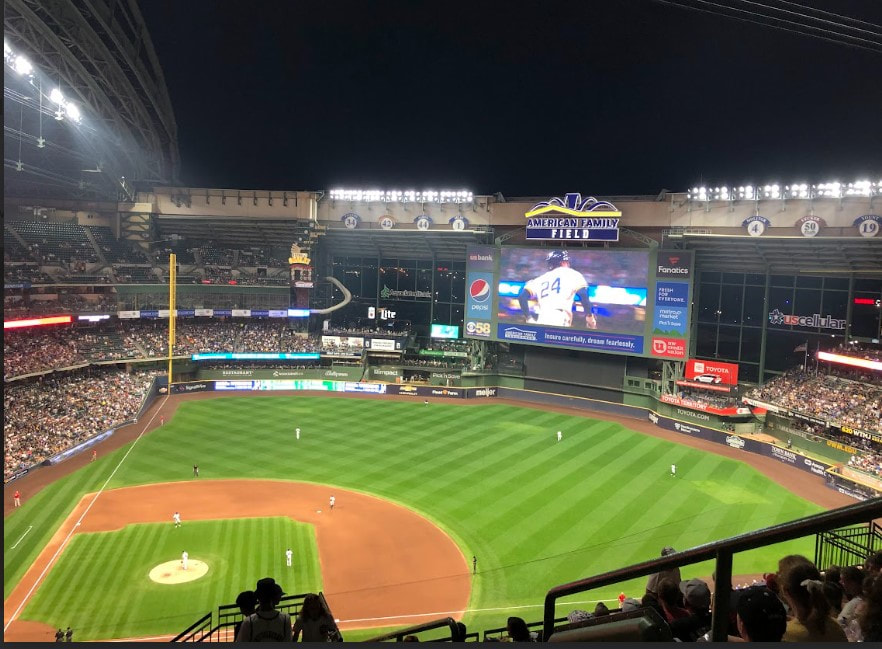
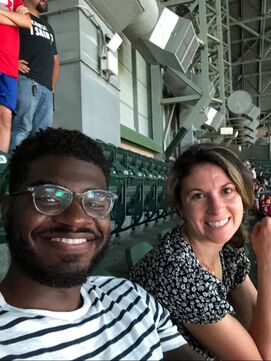



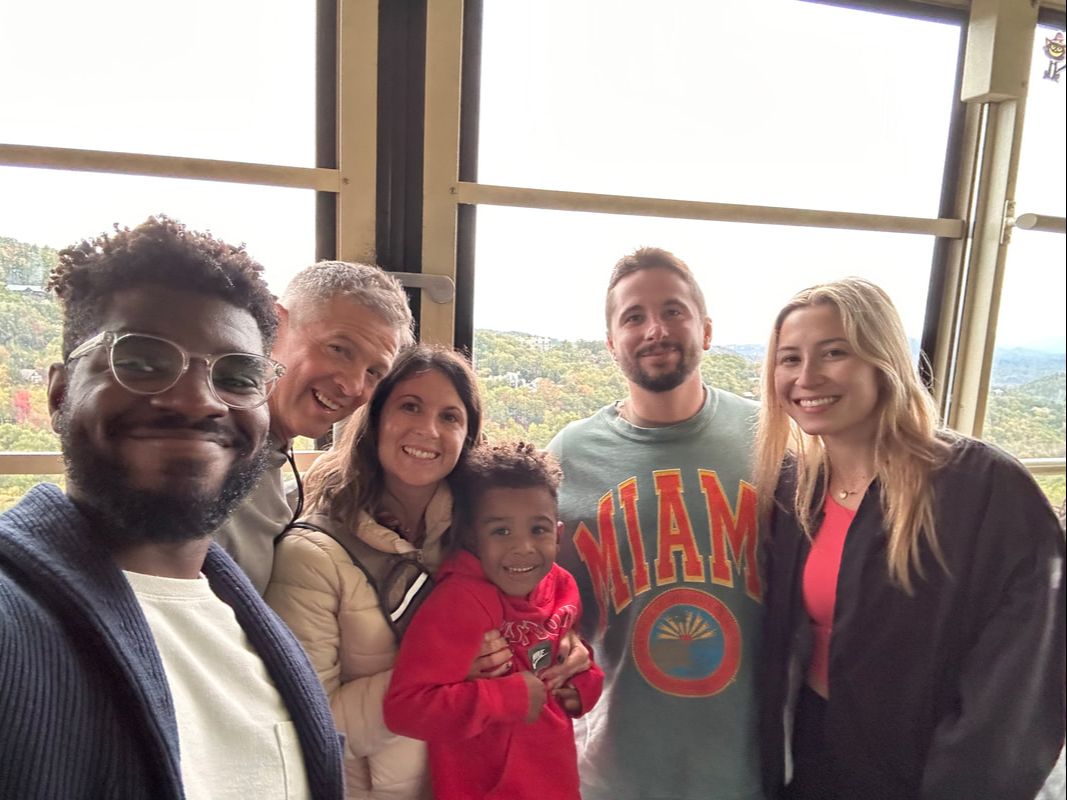
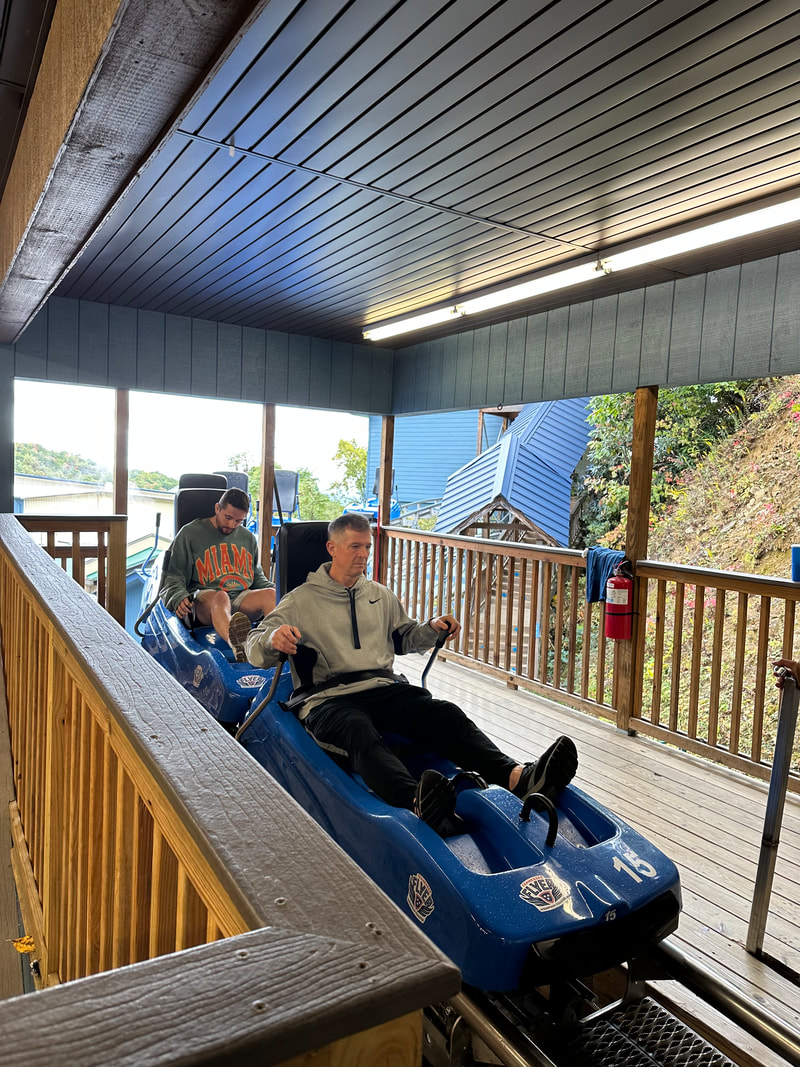


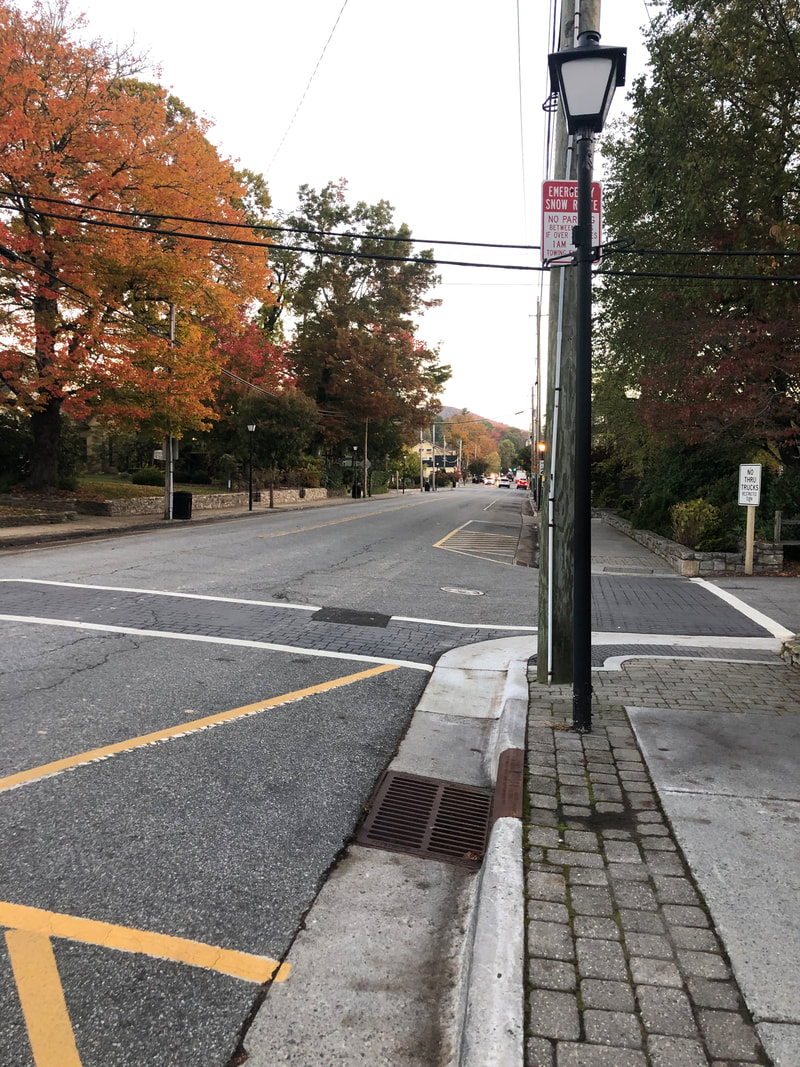
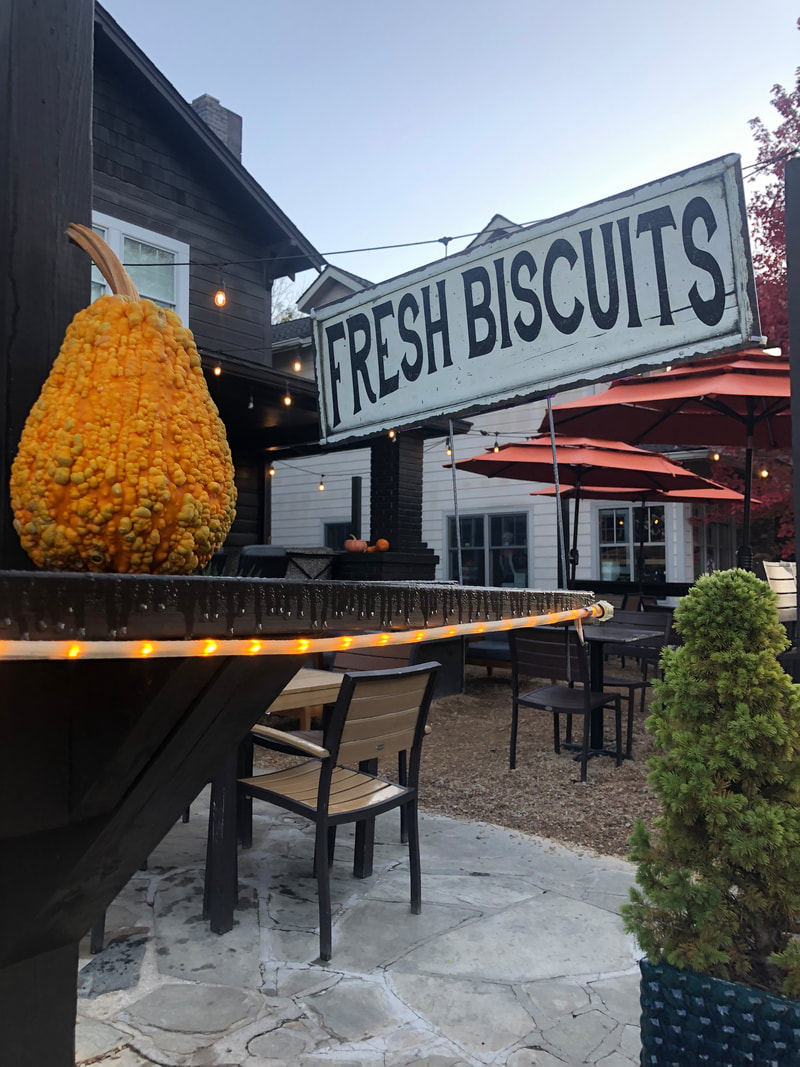
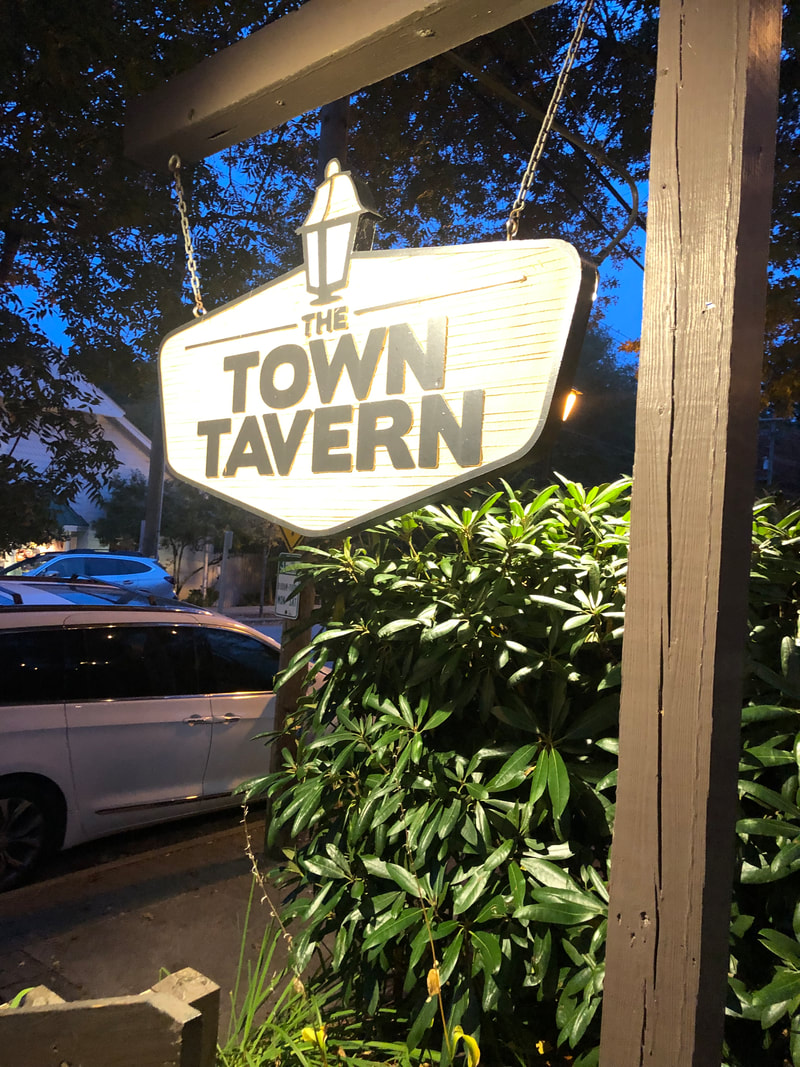
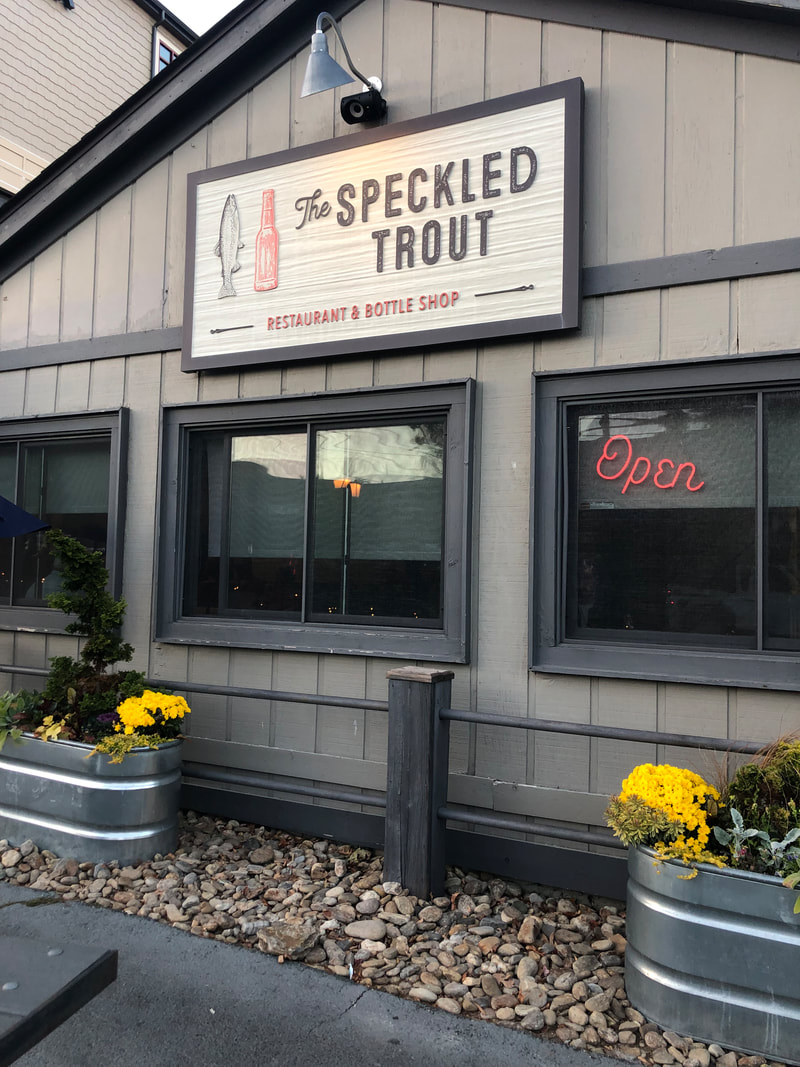


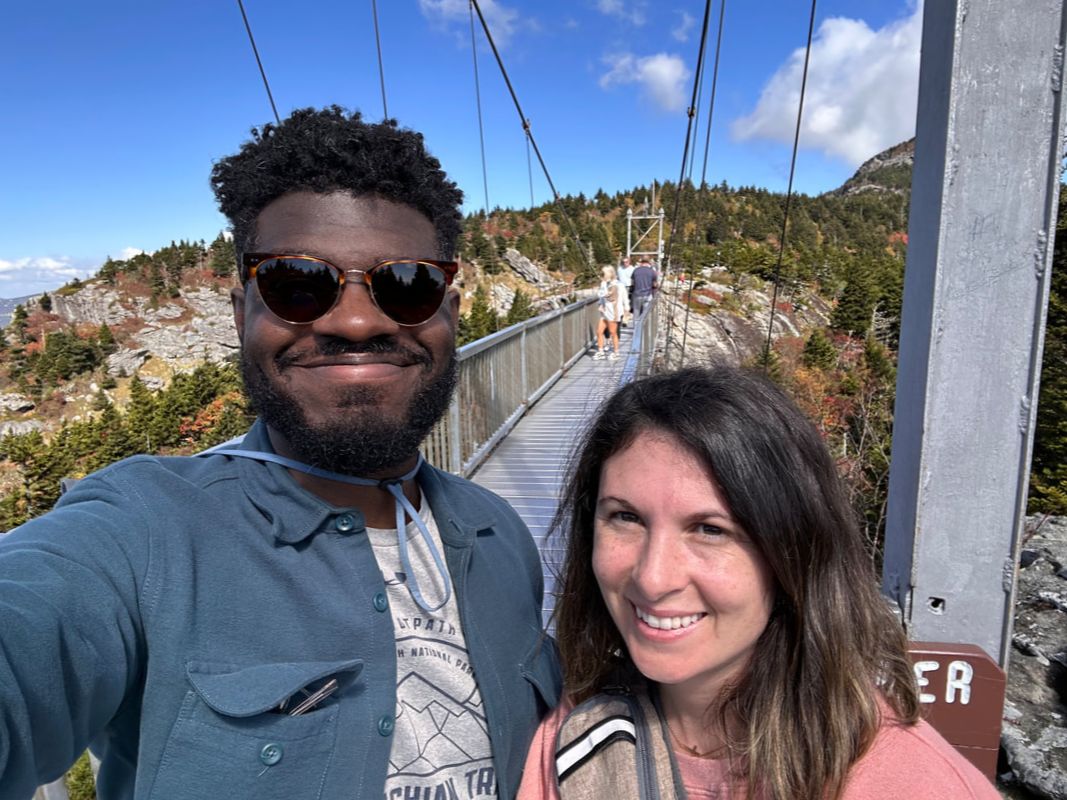
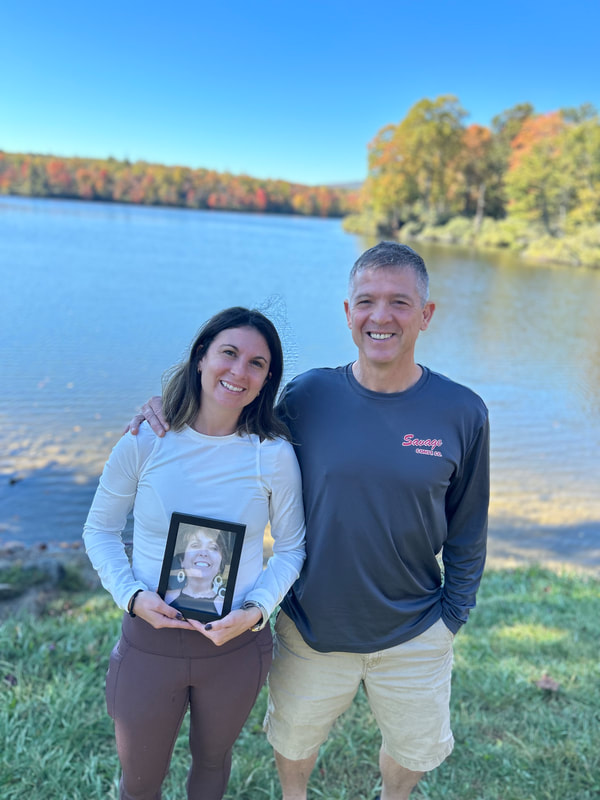
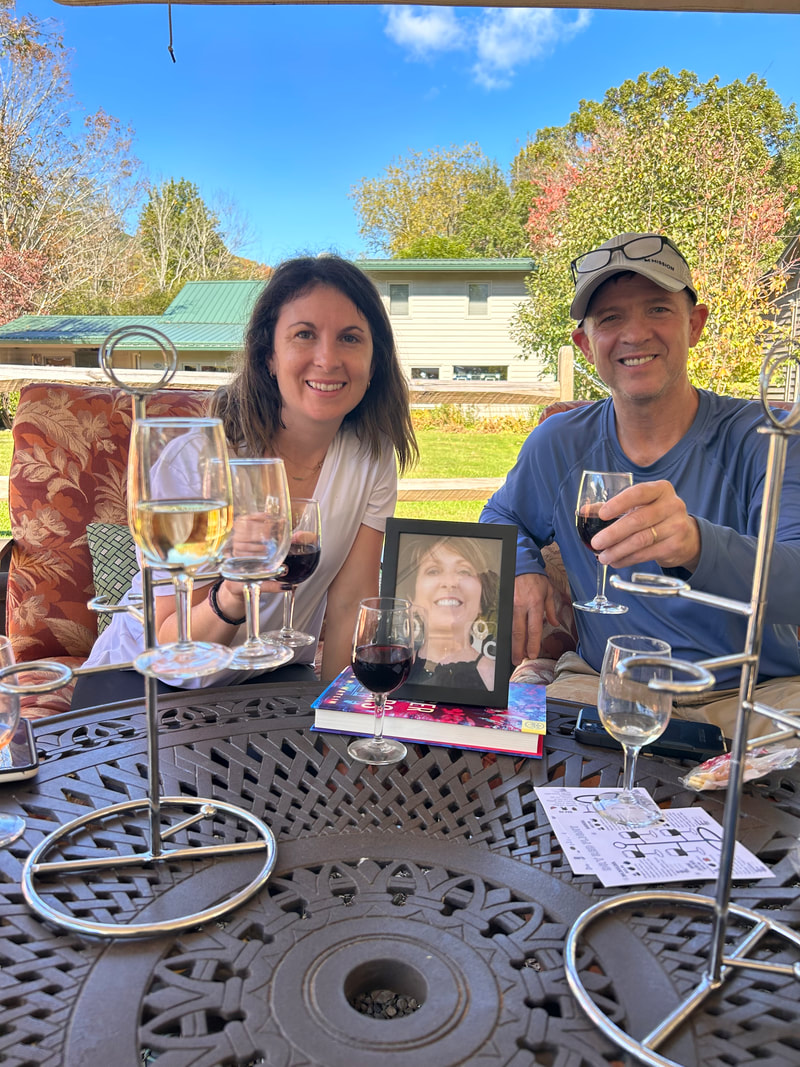
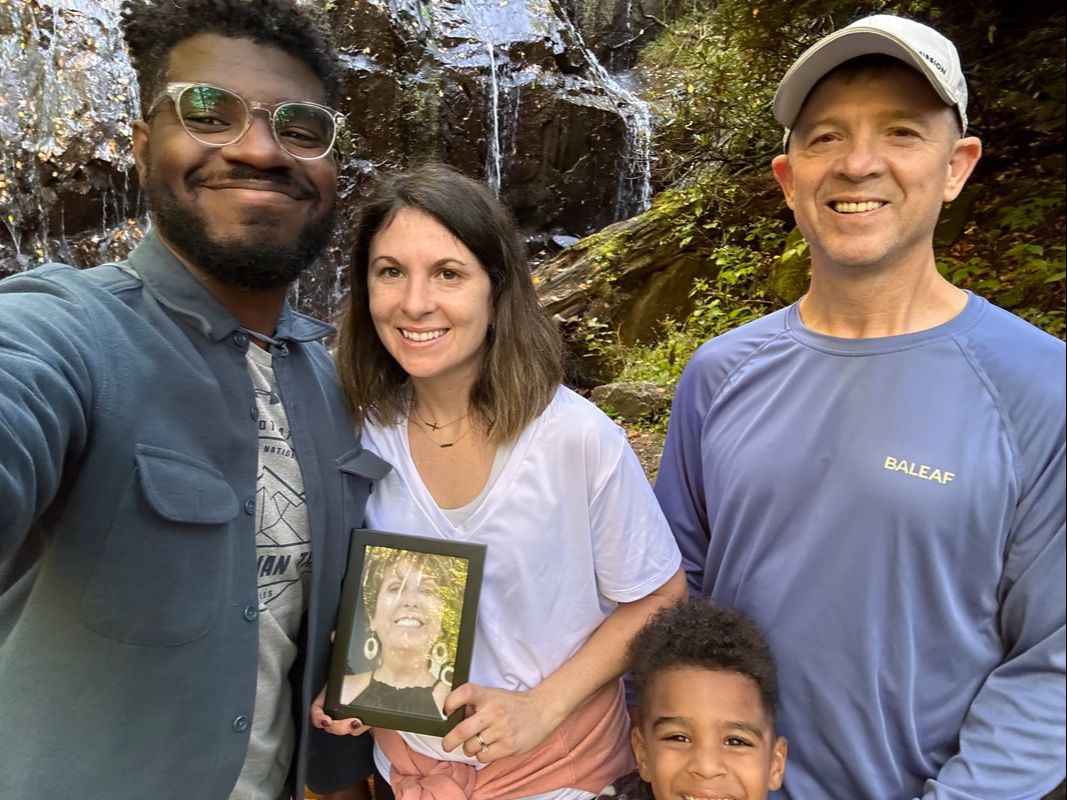

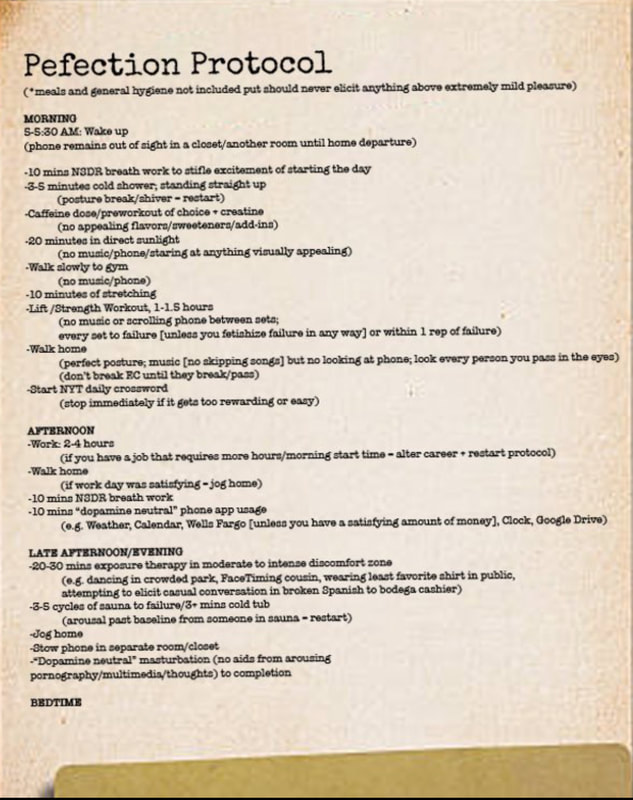
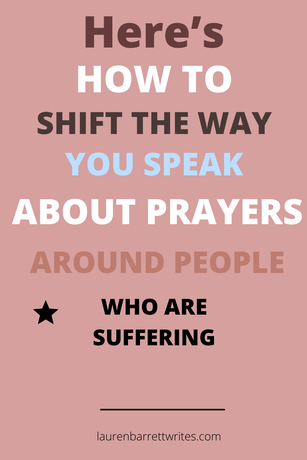




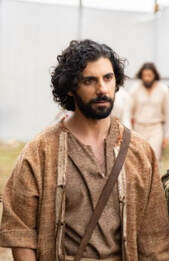




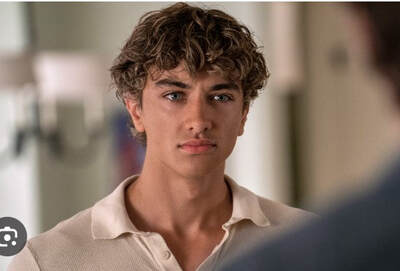
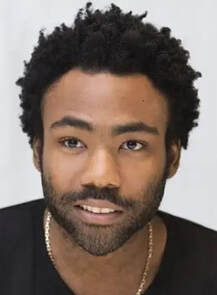
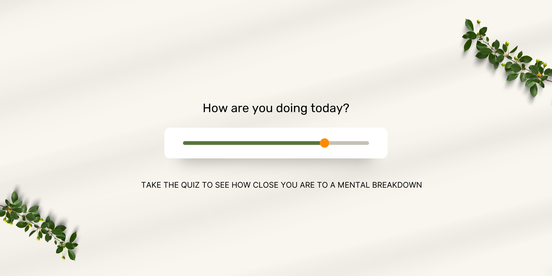





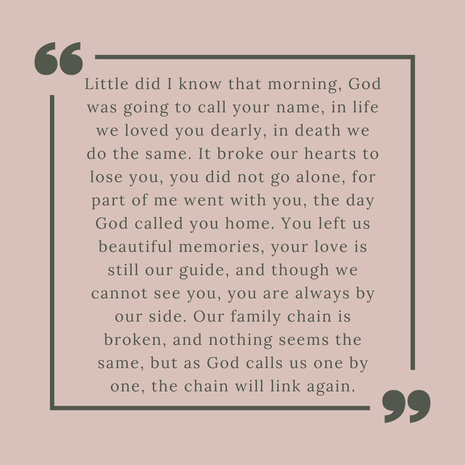
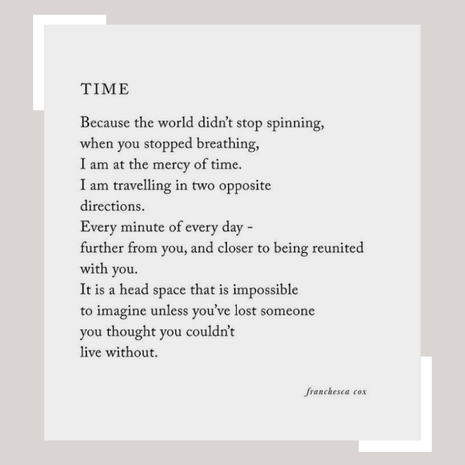

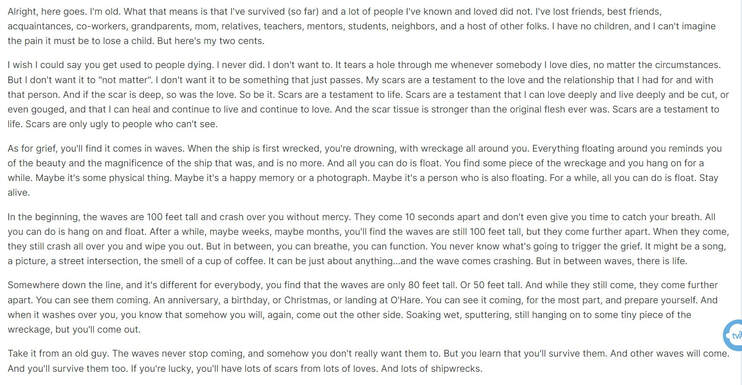
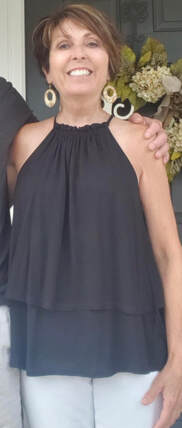

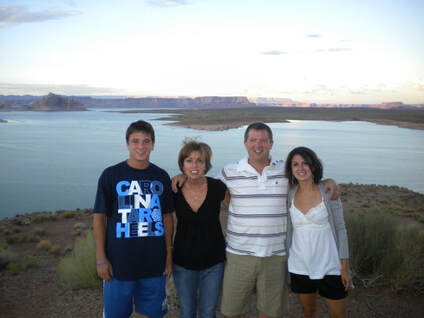
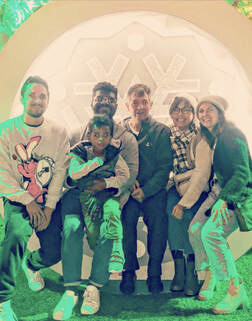
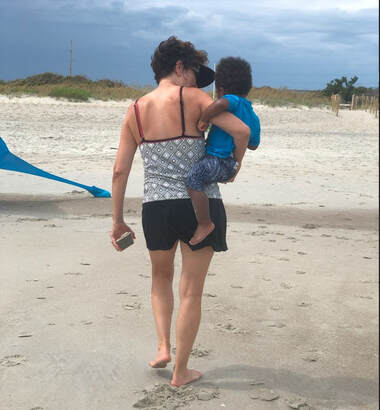
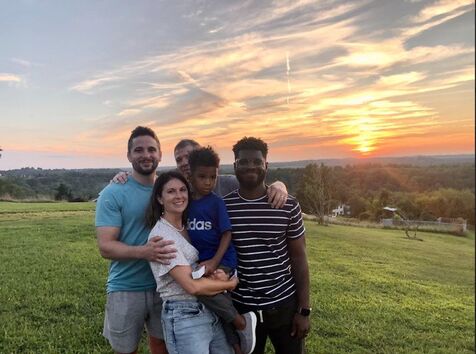


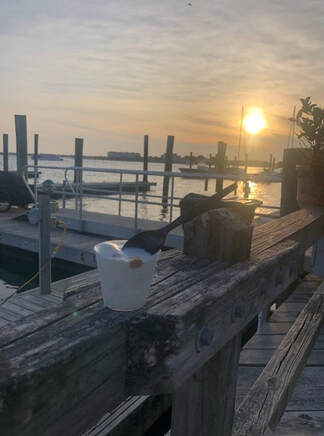
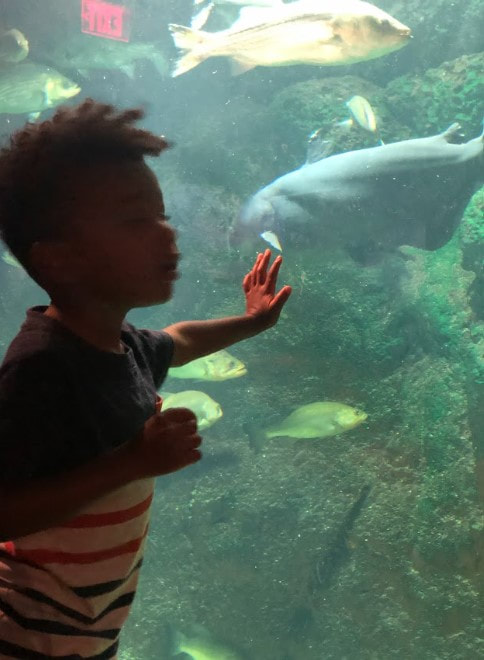

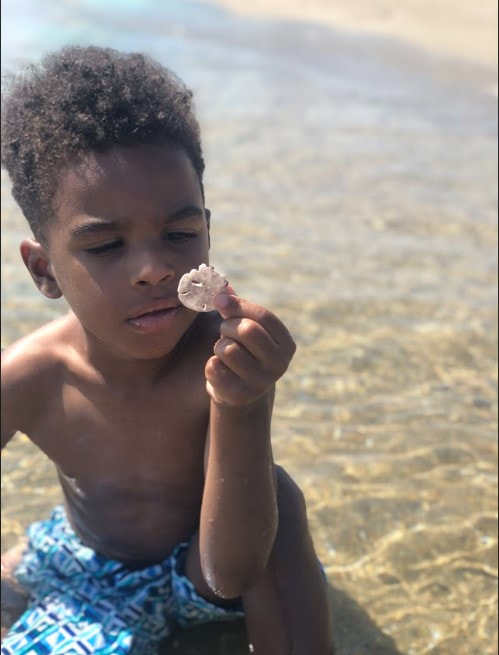


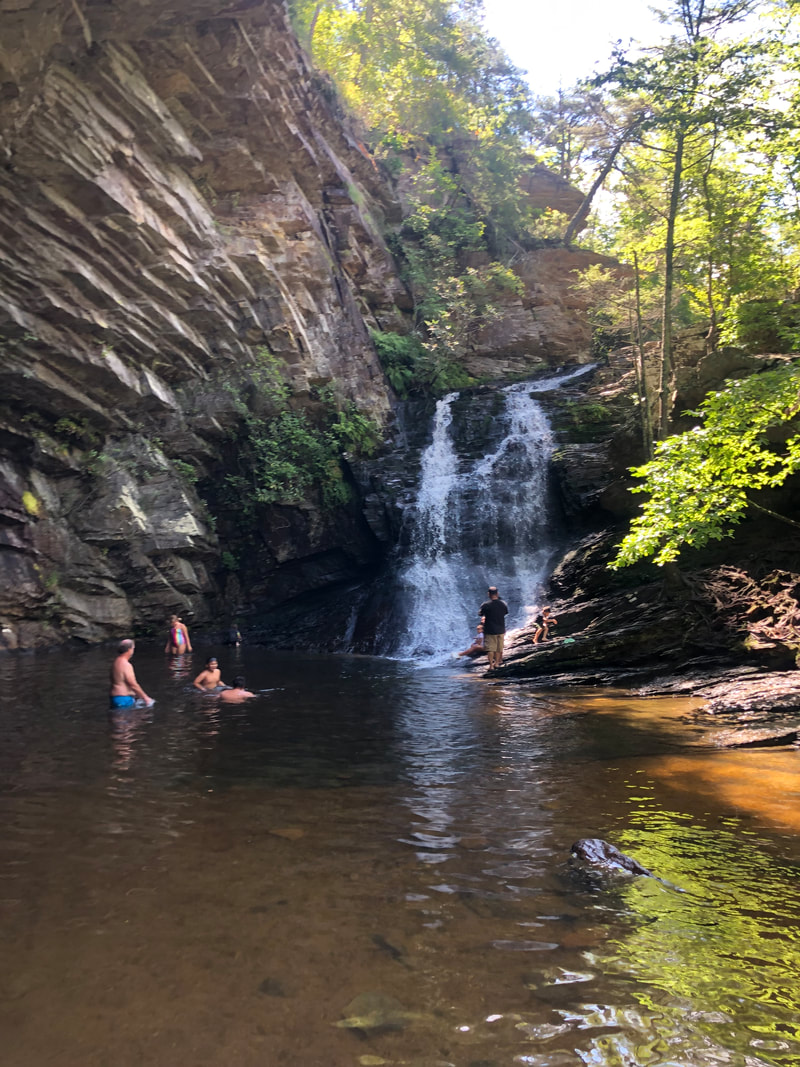
 RSS Feed
RSS Feed